Seafarer's Boots treasure map solution in Avowed
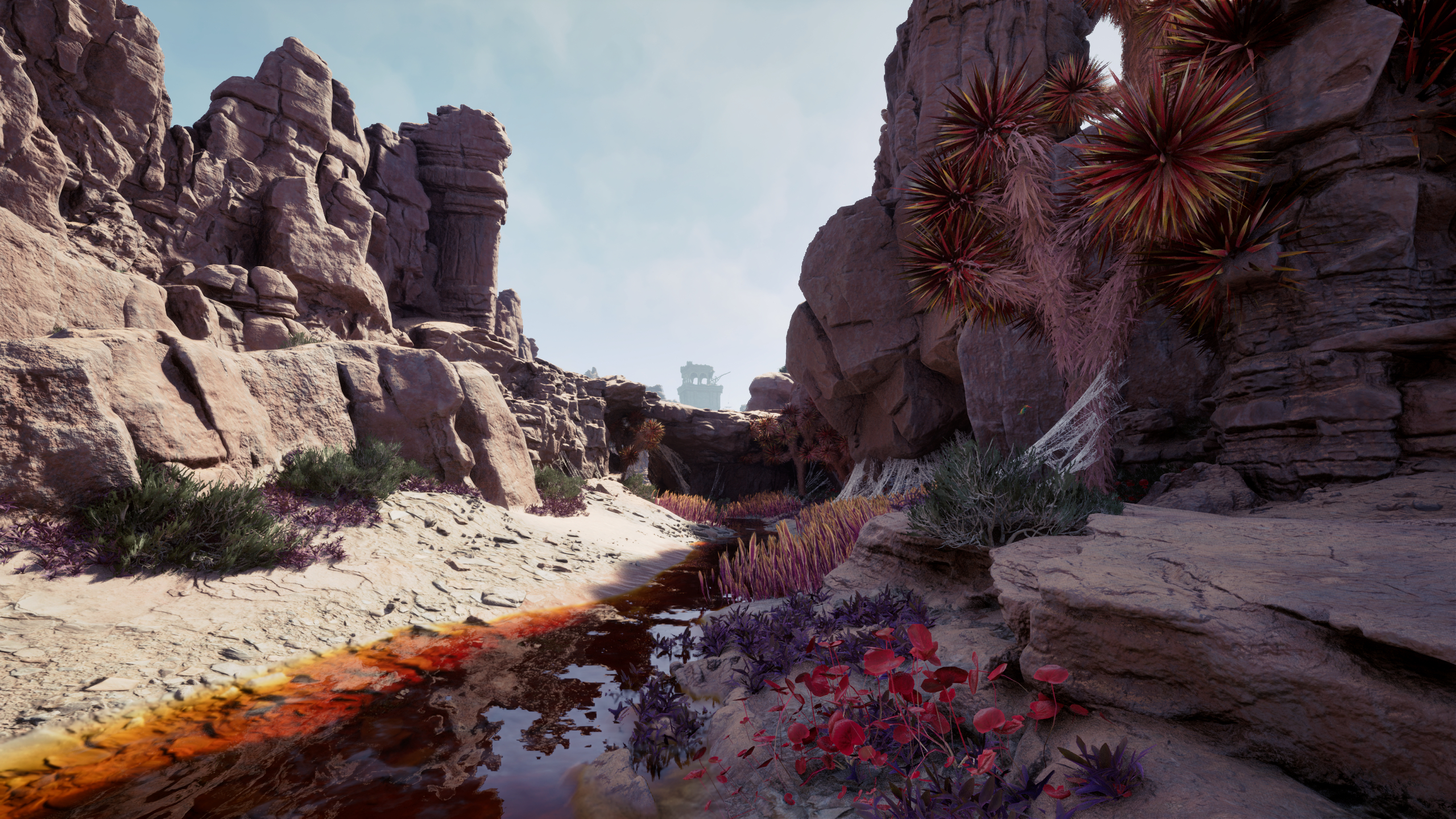
© Obsidian Entertainment/Microsoft

© Obsidian Entertainment/Microsoft
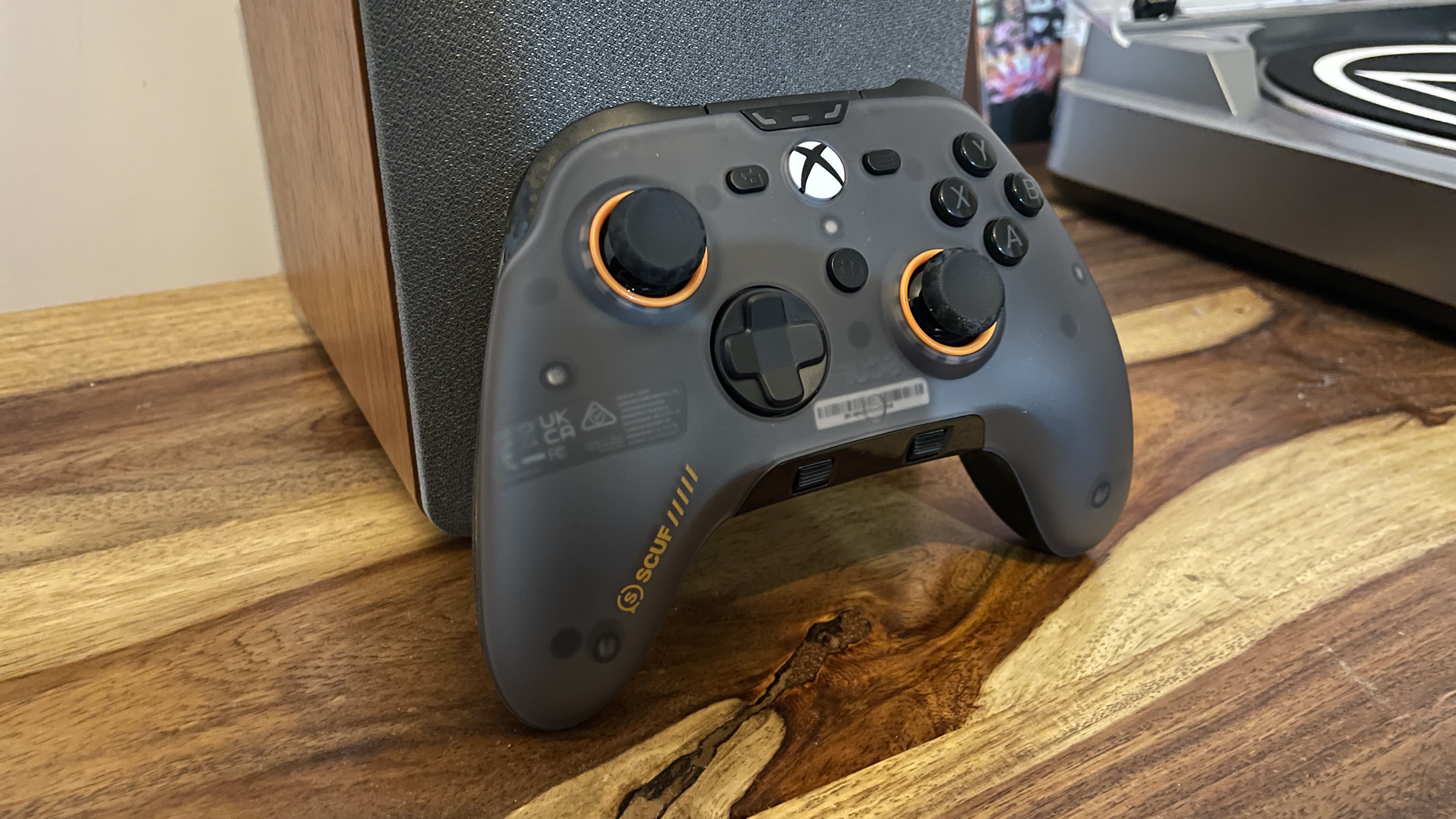
© Future
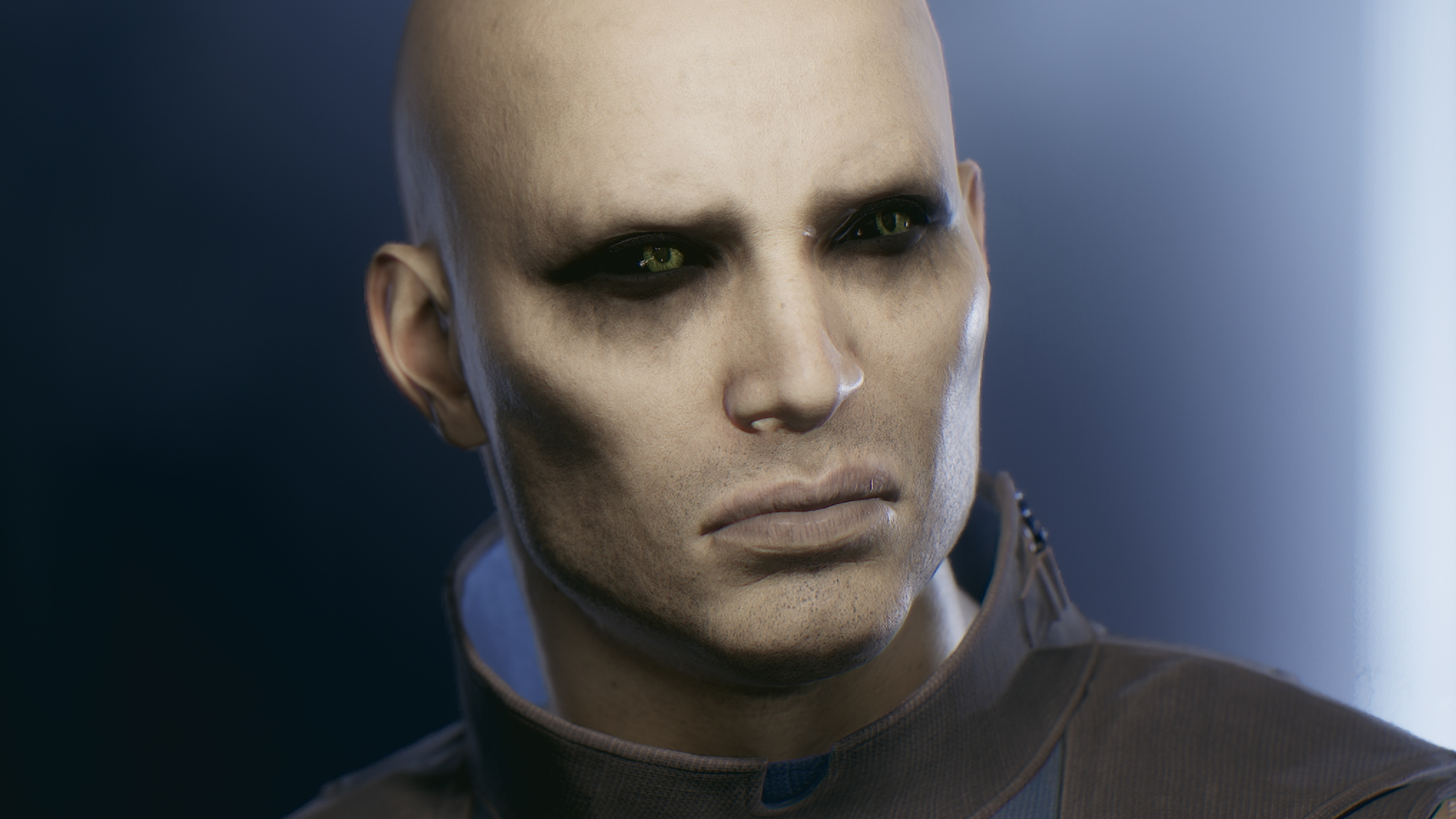
© Funcom
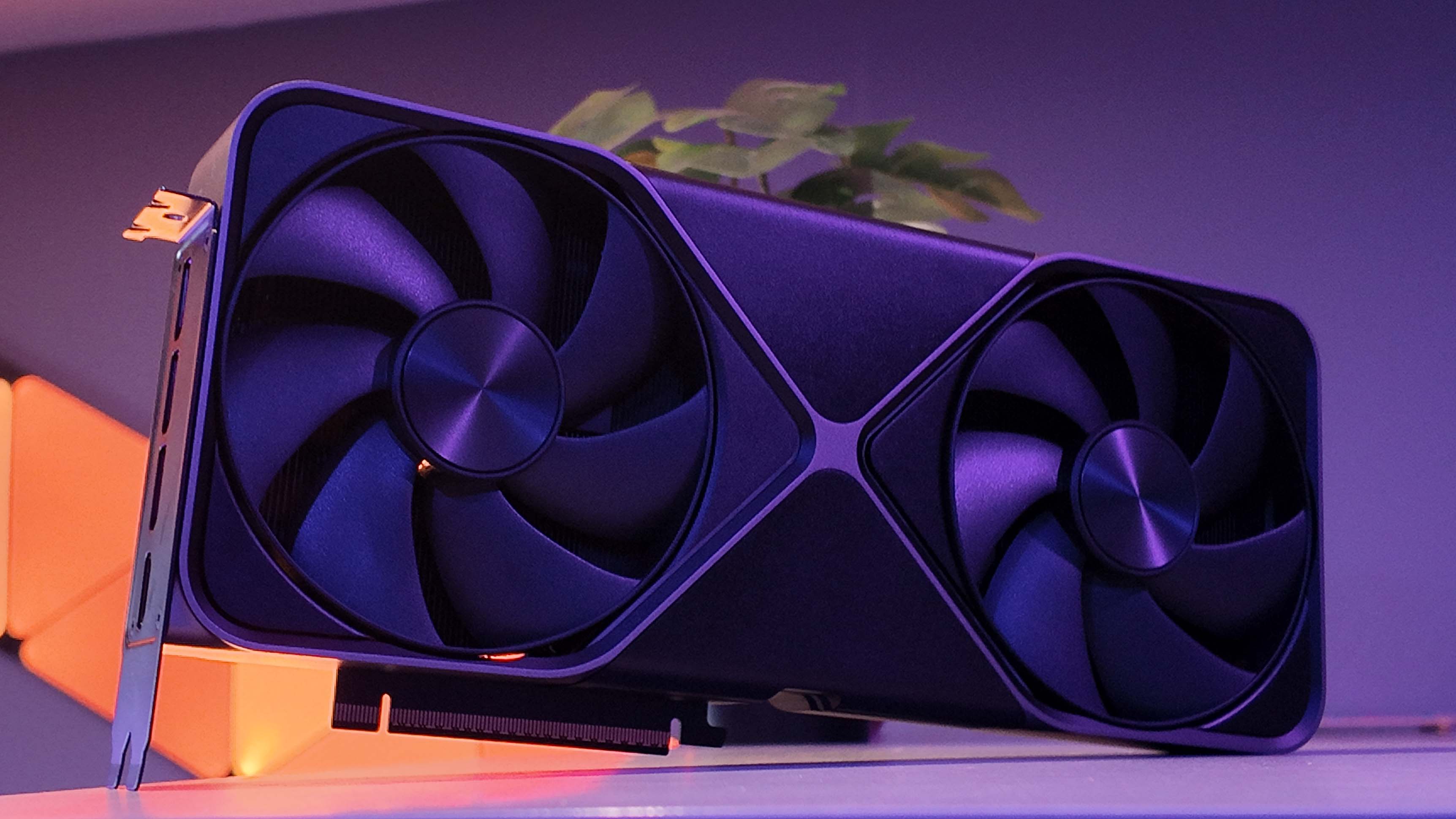
© Future
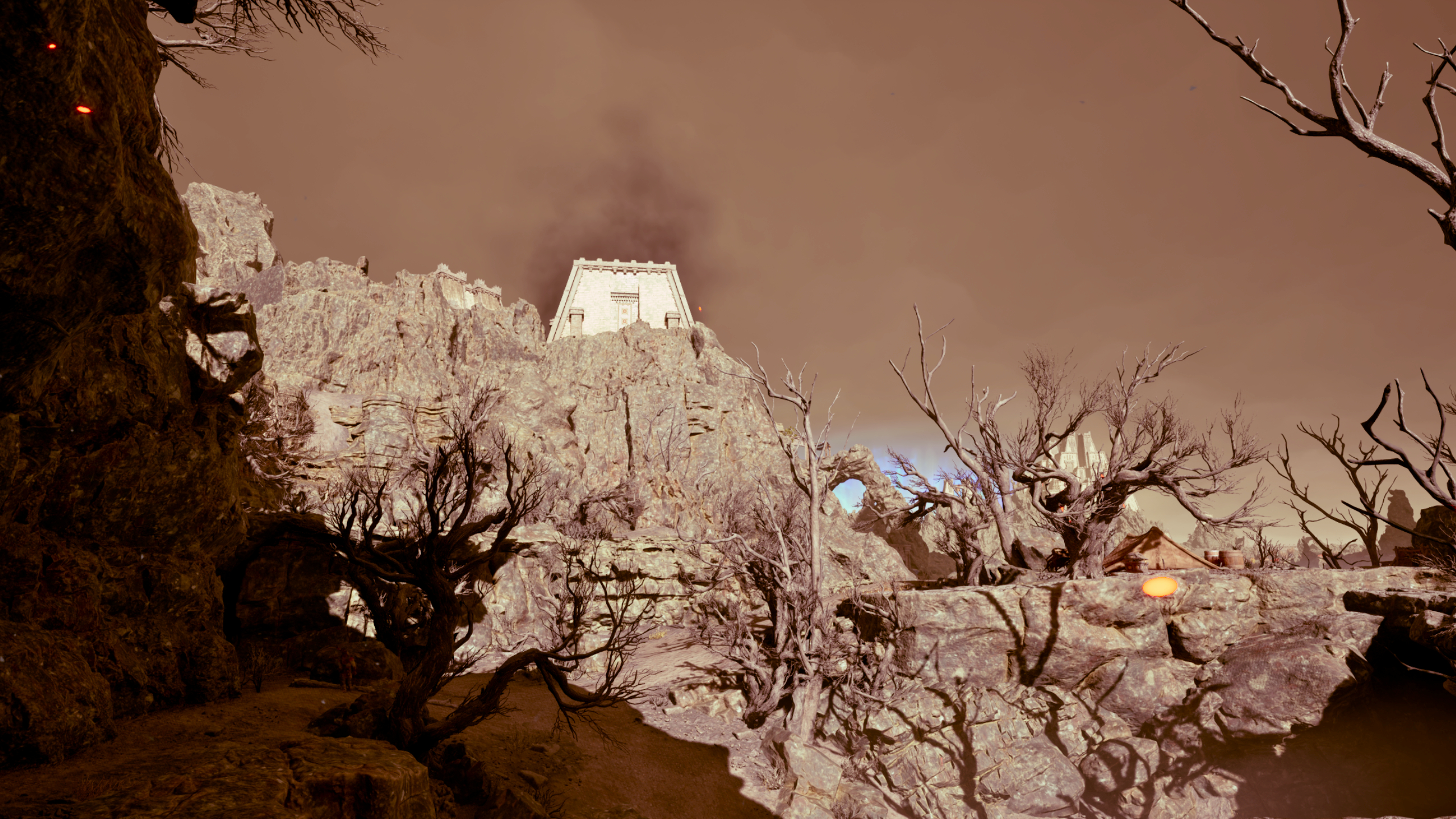
© Obsidian Entertainment/Microsoft
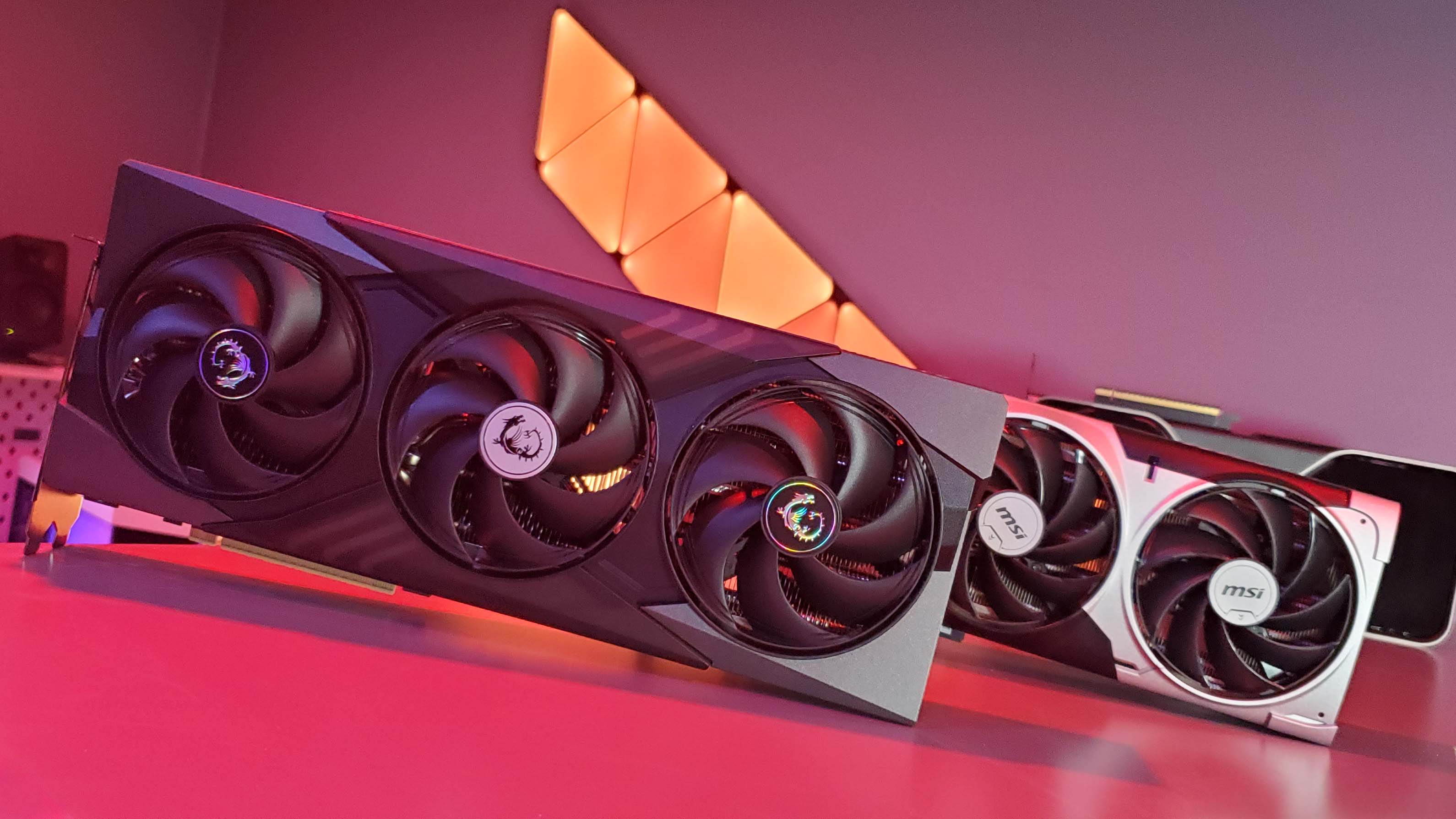
© Future
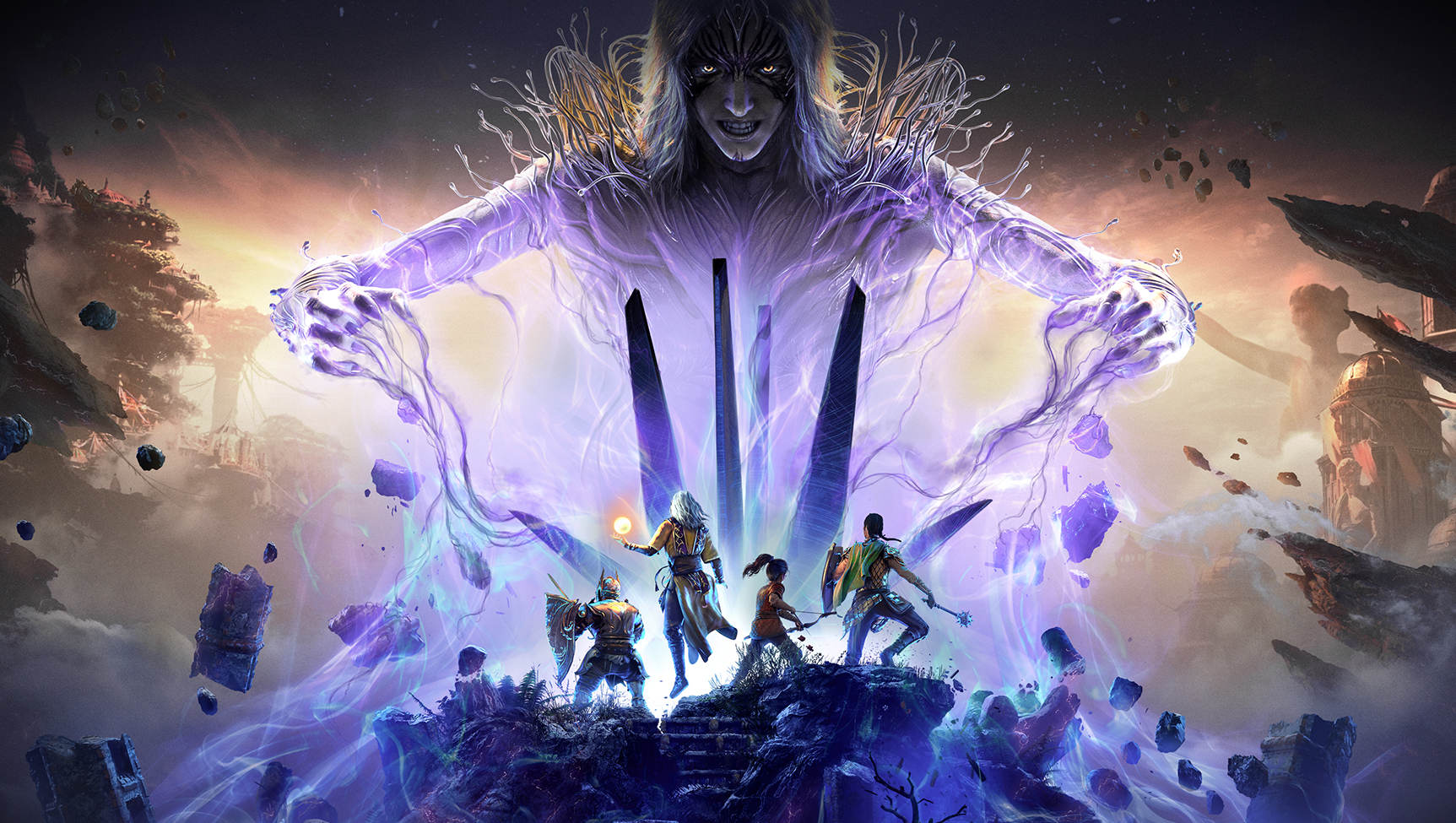
© Tactical Adventures
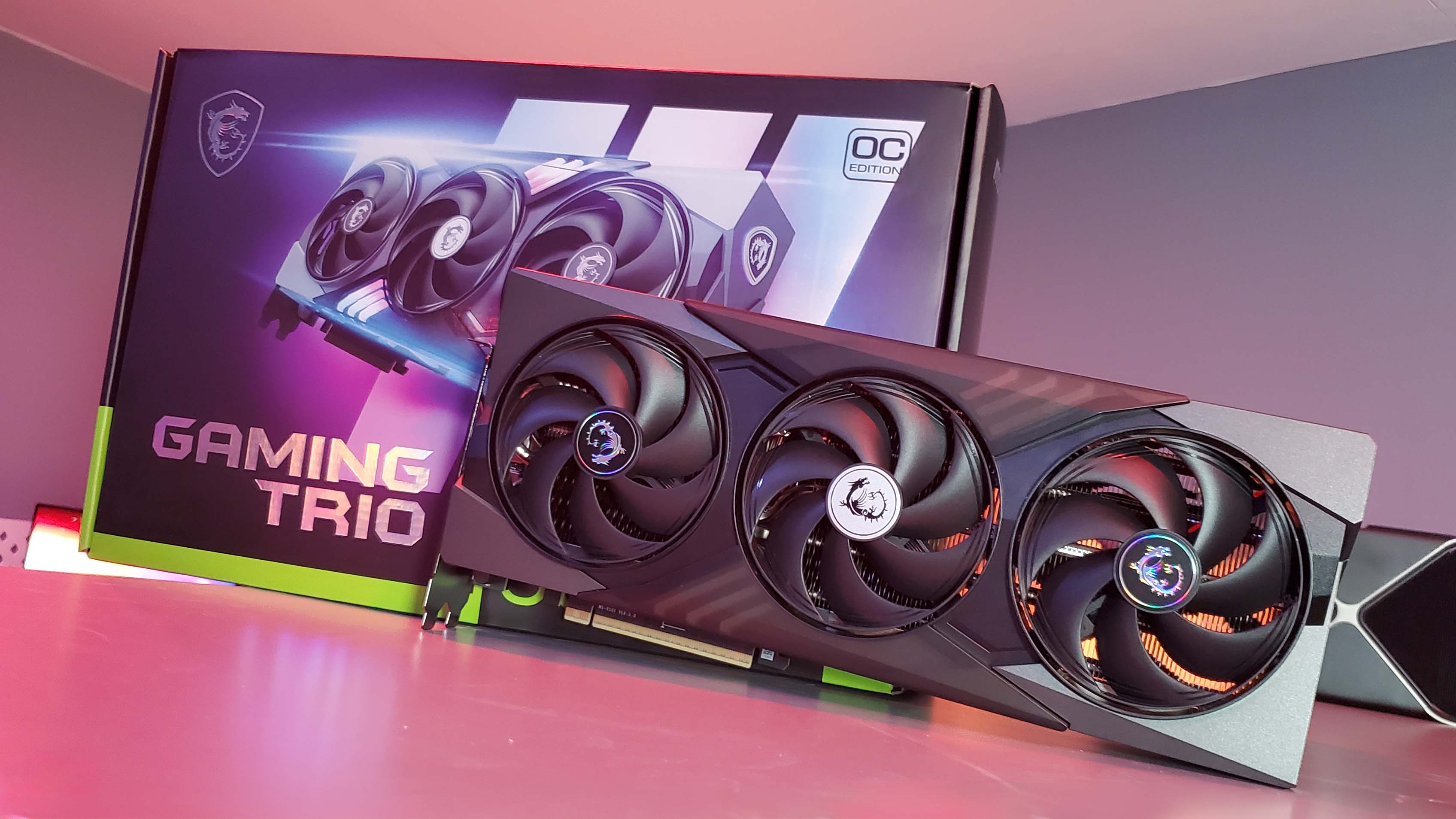
© Future

When the Nvidia GeForce RTX 5090 came out, it offered a lackluster generational improvement over the RTX 4090 at a much higher price. And while the Nvidia GeForce RTX 5070 Ti still isn’t much faster than its last-gen counterpart, it is more affordable, making it the most reasonable Blackwell graphics card to actually buy, especially if you don’t have unlimited cash to burn.
At its base price of $749, the GeForce RTX 5070 Ti is an excellent 4K graphics card that all but pushes the more expensive RTX 5080 out of the picture. However, I have to be up front about something: the RTX 5070 Ti I received for review is an aftermarket model from MSI that’s much more expensive – $1,099 – which is more expensive than the $999 RTX 5080 – assuming you can find either of these graphics cards at their actual retail price. If you can find an RTX 5070 Ti at $749, though, it is probably the best graphics card for most people, especially if you have 4K gaming on your bucket list.
The Nvidia GeForce RTX 5070 Ti is the third graphics card built on Nvidia’s Blackwell architecture. While this architecture was initially designed for the supercomputers that run popular AI models like ChatGPT, Nvidia has ported it down into its new generation of gaming GPUs, while still retaining a lot of the AI focus.
This graphics card is based on the same GB203 GPU as the RTX 5080, just with 14 of the streaming multiprocessors (SM) disabled. That means the RTX 5070 Ti has 70 SMs, for a total of 8,960 CUDA cores, 70 RT cores and 280 Tensor Cores. Also like the RTX 5080, the RTX 5070 has 16GB of GDDR7 RAM, though it is a bit slower. The Tensor Cores are the star of the show, however. Because while the CUDA cores in the RTX 5070 Ti are certainly more powerful than their equivalent in the RTX 4070 Ti, Nvidia is banking on AI upscaling and frame generation to really push this graphics card over the edge.
This time around, though, the Tensor Cores aren’t on their own, with Blackwell now including a new AI Management Processor, or AMP, to help assign work throughout the GPU. This was a process that has historically been reserved for your CPU, and moving that work onto the graphics card makes processes like DLSS or frame generation much more efficient.
In fact, this efficiency has led Nvidia to fundamentally change how DLSS works, as it’s now running on a Transformer model, rather than a Convolutional Neural Network, or CNN. This won’t necessarily make DLSS any faster, but it absolutely makes a noticeable difference to image quality, eliminating much of the ghosting and other artifacts that have plagued Team Green’s upscaling solution since day one.
But it’s more than just better upscaling. DLSS 4 also includes a new form of Frame Generation that Nvidia is dubbing “Multi-Frame Generation” or MFG. Just like the first generation, MFG uses AI to generate entire frames, based on analyzing frames as they’re rendered, along with motion data gathered from the game engine. The key difference in this generation is that instead of one AI frame from each rendered frame, DLSS 4 now generates up to 3 frames off of each rendered frame. The tradeoff is higher latency, though Nvidia has another bit of tech, called Reflex, which can potentially help offset the increased latency.
With a 300W Total Board Power budget, the RTX 5070 Ti isn’t much more power-hungry than the last-gen RTX 4070 Ti, or even the RTX 4070 Ti Super, which both required 285W. Nvidia does recommend a 750W power supply with the 5070 Ti, but if you really want to be on the safe side, I’d recommend going for at least an 850W PSU, especially if you opt for the high-end MSI Vanguard Edition I got in for review.

While the RTX 5070 Ti is faster than its predecessor, Nvidia’s real selling point for this generation is DLSS 4, and particularly multi-frame generation. If you have a gaming monitor with a high refresh rate, this technology will help you get the most out of your display, just don’t go hoping for dramatically better latency.
The way it works is the Tensor Cores will analyze each frame as it's rendered, and pair that data with motion vector information taken from the game engine to essentially guess where everything in the scene will be in the next frame. It then uses AI to generate entire new frames using this data. The underlying technology here isn’t new – the Nvidia GeForce RTX 4090 used similar tech – but the difference here is scale.
Rather than only being able to generate one frame in between each rendered frame, MFG allows the graphics card to generate up to three. This can theoretically increase your frame rate by as much as 4x, which can really help saturate high end gaming monitors. In reality, though, it’s rarely a straight 4x improvement.
In Cyberpunk 2077, with the Ray Tracing Overdrive preset, with DLSS set to performance, I was able to get 46 fps on the RTX 5070 Ti, with around 43ms of PC latency. When I turned on 2x frame gen, that number went up to 88 fps, but the latency also increased, up to 49ms, even with Reflex enabled. With 4x frame gen, I was able to get 157 fps, with 55ms of PC latency, making for a 3.4x increase to frame rate, though with worse latency.
In Star Wars Outlaws, the RTX 5070 Ti gets 67 fps at 4K Max settings with DLSS set to “performance”. With 2x frame gen, that number went up to 111 fps. What sets this game apart, however, is that latency actually went down from 47ms to 34ms when enabling frame gen, thanks to Reflex. However, when I bumped it up to 4x frame generation, the frame rate went up to 188 fps, with latency also increasing to 37ms.
So, while Multi Frame Generation will make your games look smoother on a high-refresh display, they won’t actually get more responsive. That’s not to say the games will be laggy with frame generation enabled. The increases to latency are minimal, as long as you’re getting a good frame rate to begin with.
This is because the higher your frame rate is, the more information the frame generation algorithm has to work with, and the better it is at predicting the next image. If you try to enable frame generation and you’re only getting, say, 30 fps, it becomes much more likely that you’re going to get noticeable lag and artifacts as the GPU struggles to predict images accurately. Luckily, that’s not something you’ll have to worry about with the RTX 5070 Ti, even at 4K.
At 4K, the Nvidia GeForce RTX 5070 Ti is about 11% faster than the RTX 4070 Ti Super and 21% faster than the RTX 4070 Ti. That’s a much better generational uplift than the RTX 5080, and makes the RTX 5070 Ti the best value graphics card of this generation so far. Across my entire test suite, the RTX 5070 Ti was easily able to top 60 fps at 4K, even in demanding games like Black Myth Wukong and Cyberpunk 2077.
To be clear: while I did only get in the supercharged RTX 5070 Ti Vanguard SOC from MSI, I ran it at stock settings without overclocking in order to measure how the RTX 5070 Ti performs in general, even if it’s an MSRP card. As such, I’ll be scoring this review based on the $749 MSRP of the base GPU.
I tested all of these graphics cards on the current live version of every game, and with the most recent drivers. That means all Nvidia cards other than the 5070 Ti itself were tested on Game Ready Driver 572.42 and all AMD cards were tested on Adrenalin 24.12.1. The RTX 5070 Ti was tested on a prerelease driver provided by Nvidia. All the games here are tested without any form of Frame Generation, and upscaling is used in games that support both DLSS and FSR, using the appropriate tech for each graphics card.
In 3DMark Speed Way, the GeForce RTX 5070 Ti has a strong start, scoring 7,590 points to the RTX 4070 Ti Super’s 6,374 and the RTX 4070 Ti’s 5,552 points. That marks a 19% jump over the RTX 4070 Ti Super and a whopping 36% jump over the vanilla RTX 4070 Ti. Likewise, in Port Royal, the RTX 5070 Ti manages 18,839 points, compared to 15,670 and 14,136 from the 4070 Ti Super and 4070 Ti, respectively. This shows the potential performance of the RTX 5070 Ti, and how it has room to grow in the future as drivers evolve and games are better engineered to take advantage of Blackwell.
When it comes to actual games, the performance difference over the RTX 4070 Ti wanes a bit, with the RTX 5070 Ti getting 121 fps in Call of Duty: Black Ops 6 at 4K Extreme. Compared to the RTX 4070 Ti Super with its 115 fps, that’s only a 5% gen-on-gen improvement, a red flag to be sure.
But, in Cyberpunk 2077, one of the most demanding games out there, the RTX 5070 Ti ekes out a 9% lead over the RTX 4070 Ti Super and a 17% lead over the RTX 4070 Ti. Even at 4K with the Ray Tracing Ultra preset, the RTX 5070 Ti has no problem sitting at 75 fps, cementing this GPU’s status as a 4K card.
Metro Exodus: Enhanced Edition is an odd game, in that the only upscaling solution it supports is DLSS, so I test it without it. Under those conditions, the RTX 5070 Ti is only able to manage 48 fps at 4K on the Extreme preset. However, the RTX 4070 Ti Super only gets 45 fps in the same test, with the RTX 4070 Ti lagging further behind with 42 fps.
Red Dead Redemption 2 is a bit of an outlier, though, with the RTX 5070 Ti coming in 2% slower than the RTX 4070 Ti Super. The new card gets 113 fps, compared to 115 from the last-generation model, which is a high frame rate, but still a performance loss. Luckily, this is the only game where this happens.
I love testing Total War: Warhammer 3, because it doesn’t support ray tracing or upscaling in any form, so it gives a clear picture on pure rasterization performance. Even at 4K max settings, the RTX 5070 Ti manages an average of 78 fps, making for a 15% improvement over the RTX 4070 Ti Super and 30% over the regular RTX 4070 Ti. This is the closest the RTX 5070 Ti gets to showing off the potential demonstrated in 3DMark.
When I tested the RTX 5090, Assassin’s Creed Mirage had some driver issues that stopped it from showing the 5090’s potential. It seems like those have now been addressed and the RTX 5070 Ti manages 149 fps at 4K with the Ultra High preset. That’s compared to 141 fps from the RTX 4070 Ti Super and 132 fps from the 4070 Ti. However, this is still below the Radeon RX 7900 XT, which manages 150 fps in the same test.
Black Myth Wukong is extremely demanding and is a good showcase of where graphics tech is right now. But, even at 4K with the Cinematic Preset and DLSS set to 40%, the RTX 5070 Ti manages an average of 66 fps. Compared to 60 fps from the RTX 4070 Ti Super, that’s a 10% improvement, and helps avoid any situations where your frame rate will drop below 60 fps. Team Green also takes the performance crown back here, with the AMDRadeon RX 7900 XT also getting just 60 fps in Black Myth Wukong with FSR set to 40%.
While it’s getting old, games like Forza Horizon 5 reward high frame rates, thanks to the fast pace of the gameplay. Luckily, the RTX 5070 Ti does more than keep up, getting 152 fps at 4K with the Extreme preset. That’s a 15% improvement over the RTX 4070 Super and 21% over the RTX 4070 Ti. This is even a 10% lead over the Radeon RX 7900 XT, and Forza is a game that traditionally favors AMD GPUs.
We’re entering a time where even a mid-range graphics card is essentially a ‘4K GPU’. If you can find it around the starting price of $749, the Nvidia GeForce RTX 5070 Ti provides the best value for your money, especially if you have a 4K display. Not only is it the first RTX 5000 graphics card that provides a decent uplift over its predecessor, but it does so with a lower price tag than the $799 RTX 4070 Ti.
Jackie Thomas is the Hardware and Buying Guides Editor at IGN and the PC components queen. You can follow her @Jackiecobra

If you're searching for Volleyball Legends codes (previously Haikyuu Legends), IGN has you covered! In this article, you'll find the latest active and working Volleyball Legends codes in February 2025 that can be redeemed for free rewards in Roblox, including Spins and Yen.

Below, you'll find all of the currently active and working Volleyball Legends codes in February 2025:
The following Volleyball Legends codes are expired and can't be redeemed anymore as of February 2025:
Follow the steps below to redeem Volleyball Legends codes and claim your free rewards:

If your Volleyball Legends code isn't working when you're trying to redeem it in Roblox, it's likely down to one of these two reasons:
When inputting an Volleyball Legends code into Roblox, ensure it's spelled correctly, there are no accidental spaces either before or after the code, and that it's in the correct case (some codes are case sensitive). If a code is spelled wrong, you'll get a red message that says "Invalid Code."
All the codes on this page have been tested by IGN and work at the time of submission, so we'd recommend copying and pasting any codes directly from this article to avoid any errors. If the code still doesn't work, it's expired and can no longer be redeemed.
Outside of checking this article, the best way to get more Volleyball Legends codes is to join the official Volleyball Legends Discord server. That way, you can be notified as soon as new codes drop.
Volleyball Legends (previously called Haikyuu Legends) is a Roblox Experience inspired by the popular Shonen Jump series, Haikyu!!. In it, you compete in volleyball matches with teammates with the aim of becoming the best volleyball player and getting MVP.
Meg Koepp is a Guides Editor on the IGN Guides team, with a focus on trends. When she's not working, you can find her playing an RPG or making miniatures.
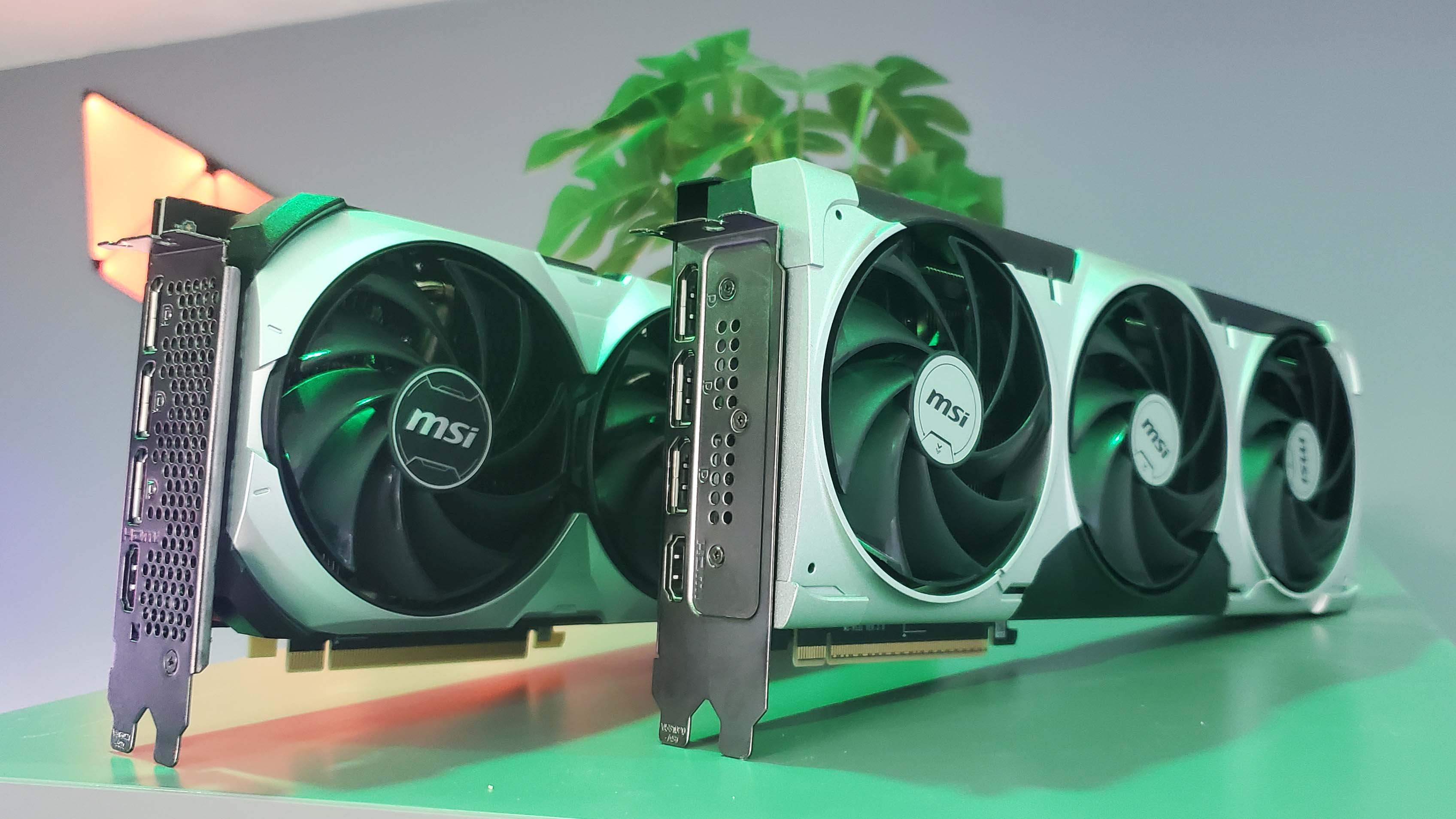
© Future
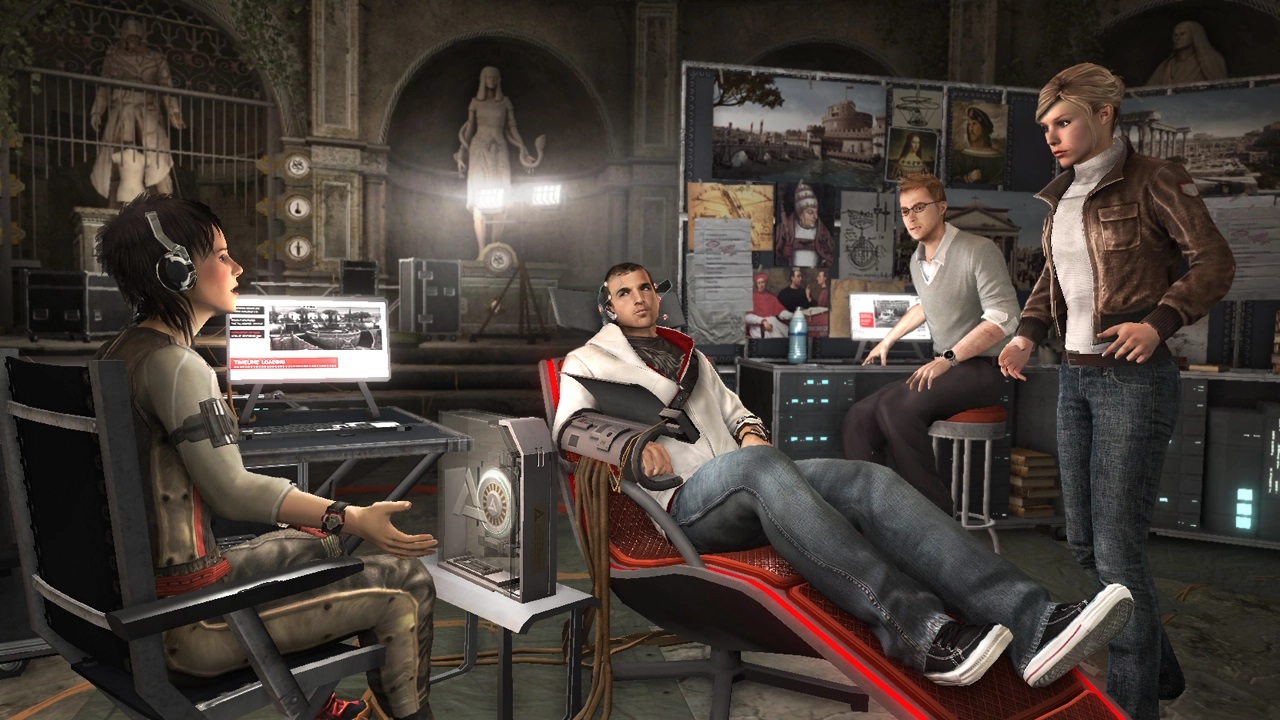
© Ubisoft
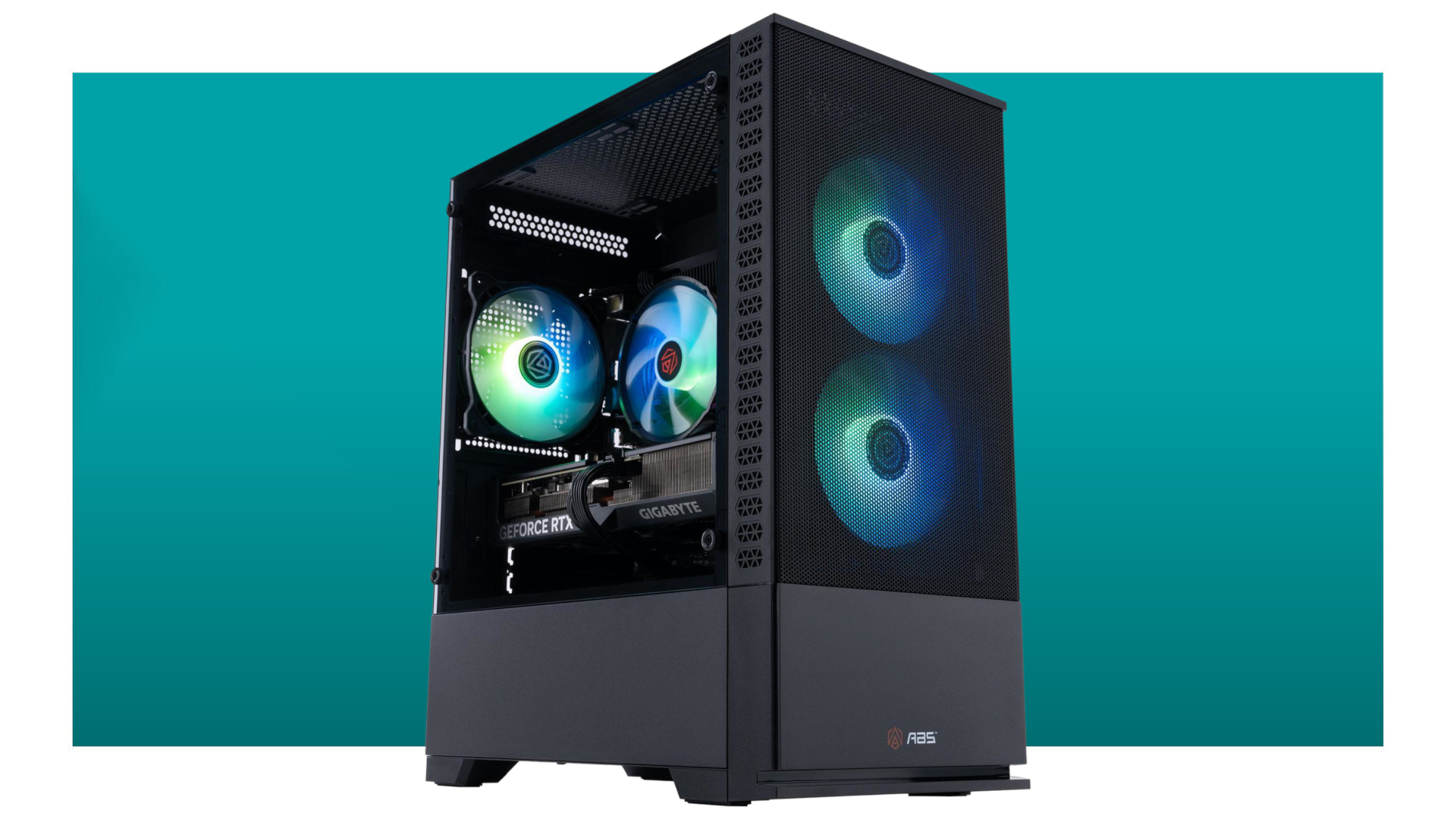
© ABS

Despite my avid love for all things sports, I've given up on the idea that I'll ever be good at golf. Something about the way the body must contort to successfully crank a ball down the fairway just doesn't compute in my mind. But like few other games can, PGA Tour 2K25 takes everything I visualize myself doing in real life and executes it virtually, thanks to its in-depth simulation gameplay that lets my thumbs and brain do what my actual body simply refuses to do.
To be honest, I went into PGA Tour 2K25 a bit hesitant. While 2K23 wasn’t the worst golf game I’ve ever played, it lacked any shine in its personality or gameplay, which came as a surprise considering HB Studios has been dutifully working on successful golf sims like The Golf Club for well over a decade. Couple this with the fact that, unlike most sports games, PGA Tour 2K took two full years to put out a new iteration, and it was safe to say my expectations were in check.
To my surprise and relief, that extra time paid off: it didn’t take long for PGA Tour 2K25 to impress me with its improvements, especially in terms of appearance. While it still can’t quite match EA Sports’ rival PGA Tour game head to head in their respective visual recreations of golf, the difference is nowhere near as stark as it had been. Player models look much closer to their real-life counterparts, courses are more detailed, and animations are crisper. I found myself pausing while playing multiple times to take in the water crashing against the rocks or comparing the cut of the fairway, fringe, and rough areas for each course. The putting and driving animations are also fluid, no longer stopping abruptly after contact or feeling too weighty. Performance is smoothed out as well, and the only time I ever ran into issues with dropped frames on my PlayStation 5 was due to internet connectivity issues. Even the single-player Career Mode is always online, so there were a few instances where my shot would stutter and even a couple of times where my round didn't save.
My biggest gripe with the look and feel of PGA Tour 2K25 is the low-energy commentary team of Luke Elvy and Rich Beem. While they are both very knowledgeable, describing approaches and conditions beautifully, their lines could not be more flatly delivered. I know golf isn’t the most exciting sport, but there is no need to sound like a robot when discussing it.
They also seem to have a vendetta against me. If I do any worse than getting on the green in two or birdie putting, Rich Beem will berate me like Bob Barker going at Happy Gilmore—the price is wrong, Richie! At least thanks to my experience dealing with FIFA commentary for years, tuning them out wasn't very difficult.
Other than that, it’s pretty much all good news. For example, it’s clear that HB Studios prioritized features that the community has been begging for. The most notable additions revolve around approaches, with the ability to change tee position and choose your hazard drop spot. It might seem like a small detail, but not being able to adjust position after a water hazard or move the ball at the tee for a better angle made for some of my most frustrating shots in PGA Tour 2K23. I love the amount of control that 2K25 gives me.
Another big change is that MyPlayer development has become an RPG system that allows you to unlock specific shots as you go, making your growth in the MyCareer campaign customizable to your specific strengths. Skills in the six trees vary from advanced shot types like the Stinger, which is ideal for dealing with high-wind situations, to proficiency boosts, which help buff each shot. I chose to build a Powerhouse archetype who focuses on driving down the fairway, getting my feet wet against other newbies in the Q-School.
It was here that I got comfortable with the new EvoSwing mechanics. The new-and-improved golf swing technique focuses on proper posture, torque, and arc size, and after each swing it even breaks down how good your contact, rhythm, transition, and swing path are so you have detailed information on how to improve. You can even customize how it controls by choosing the classic Swing Stick or the 3-Click Swing, depending on your skill level.
The Swing Stick simply requires you to pull the right stick back and release to swing, which is easy to get the hang of but it still has to be lined up well to get a good shot. The 3-Click Swing is certainly harder to master, since you have to press, hold, and release before clicking to push or pull the shot and finally click again to hook or slice, but it is something I love as a veteran golf (game) for the control it gives you over your shot. After using it to blow my competition out of the water, shooting 30 under par across four days, I moved on to the PGA Tour.
Like the real deal, the goal here is to compete for points in tournaments, finishing in the Top 70 to earn a spot competing for the FedExCup. But instead of thrusting you into each event blindly, PGA Tour 2K25 features training and scouting scenarios before each event as a way to earn stat buffs and get the lay of the land. Training scenarios are bite-sized minigames, such as target challenges or competing to land on the green quickest or to sink the most long putts. Completing these gives your character a temporary boost in specific attributes, which is applied to the coming tournament. At first, I shrugged these off as ways to pad playtime, but once I played on harder difficulties I realized how what seemed like a minor buff to my drive power could mean the difference between hitting the fair way instead of a bunker. Practice Rounds also give you an edge for the coming tournament in exactly the way you’d expect: being able to play and feel out the specific run and shape of every course just before competing there is a real difference-maker. It is so satisfying to strategize for a course just like the pros would.
Not every new feature in MyCareer lands on the fairway, though – especially the new personality and popularity mechanics. We’ve seen all this before in other games like Madden and EA Sports FC: Your pro spends time off the course gaining influence with fans, developing a following, and forming a personality based on the answers they choose in conversations and interviews. While this is a well-meaning effort to give MyCareer a bit more flair and make you feel like the belle of the ball, the system feels just as pointless as it does in other games. All conversations are done through text and don't have an effect on the actual gameplay, so it feels unpolished and isn’t a good use of time.
The actual way to get sponsorships and unlock questlines for XP is simply by doing well at playing golf. This was pretty easy to do at first because the default settings PGA Tour 2K25 feel like child's play: I was easily winning each tournament, destroying the likes of Viktor Hovland by -13 strokes a round.
At this point, I decided to experiment with the customizable sliders, which let you tune everything from CPU difficulty to green conditions to weather. The difficulty took the most time to experiment with, as it was hard to find the right percentages to match my own skills, and seemed uneven. In some games, one golfer would score 10 under the second-closest AI rival. However, once I adjusted weather and course conditions to random the playing field started to feel much more level, and scores were closer. Either everyone benefited from the smooth greens and shining sun, or everyone suffered the whipping winds and slick surfaces where the ball glides way too fast across them.
The Dynamic option, though, is my favorite addition to MyCareer since 2K23: With this, you can choose the number of holes you want to play within a course, and which specific ones, and any skipped holes will be simulated. I don't mind playing a full 18 most of the time, but having the option to shorten the time commitment for some rounds by simming dynamically is a nice touch.
Microtransactions are, unfortunately, still present in PGA Tour 2K25, but mercifully they are mostly cosmetic-based. Yes, you can dump real money into making your player a superstar stat-wise and decked out with flashy clothes right off the bat, but you'll also earn upgrade points and different outfits at a decent clip by completing tournaments, so they aren't entirely necessary and are less objectionable than what 2K has been doing in its casino-like approach to NBA 2K in recent years. So playing online with others is still enjoyable, since this isn’t a sport where you’re being dunked on by someone who can run faster and jump higher because they paid extra.
The same seven online modes from 2K23 return, including my favorite: four-ball. I loved competing against my partner and the other team, as it simply felt more competitive, fast-paced, and interactive than going against AI. For my money, this mode is the next best thing to being out on the course with your buddies competing in real life. Ranked and Casual games also let you choose between Swing Stick and 3-Click lobbies and select which gameplay features and aides you want off and on to make sure everybody’s on the same page. It’s also notable that Societies mode now offers crossplay features, letting you and your friends schedule asynchronous events regardless of platform differences.

NetEase Games has promised to release at least one new Marvel Rivals hero every half-season, but that didn’t stop one creative player from bringing his idea for a playable Doctor Octopus to life.
Reddit user WickedCube surprised r/MarvelRivals followers earlier this week with a 30-second video showing what looks like rough gameplay from NetEase’s smash-hit hero shooter. At a glance, the footage seems to focus on a pre-Hulk Bruce Banner suspended in midair in what appears to be a testing room – but it’s more than that. Marvel fans will recognize this eight-armed version of the gamma-infused doctor as an unpolished, Marvel Rivals-inspired take on classic Spider-Man villain Doctor Octopus.
It's stiff and a touch goofy, but the likeness is unmistakable. Squint and you’ll see a well-thought-out concept of what Doc Ock could potentially look and move like should NetEase ever decide to send Otto Octavius crawling into Marvel Rivals. With his arms able to magnetize the player up and around obstacles, WickedCube’s idea come-to-life essentially allows the character to fly so long as he’s close enough to a stable structure – an important note in a game with destructible environments. This rough Doc Ock concept even comes with named abilities, including Havoc Claw for the standard melee attack and a ranged move called Wrecking Grip. At 16,000 upvotes at the time of publication, it’s impressive, playable, and made entirely by one person.
“Doc Ock has always been one of the coolest villains in Spider-Man, and his tentacles would be a challenge to implement,” WickedCube tell us, describing where his inspiration stemmed from. “As far as I know, they haven't been fully implemented with playable 3D movement in a game before.”
The India-based indie game developer previously worked with Space Engineers studio Keen Software House before resigning to focus on his own project in January 2024. He's been looking for contract positions and prototyping mechanics since then, so character work usually isn’t a priority. Creating a controllable version of Doctor Octopus in Unity required clearing a few hurdles, but it’s this exact challenge that helped WickedCube pursue the idea. The rest of the push came from an unlikely source: the recent PSN outage.
“It all started when PSN was down and I couldn’t play Marvel Rivals,” WickedCube explains. “While browsing Twitter, I came across some really cool Doc Ock fan art. I thought, ‘Since I can't play right now, why not make it myself?’”
Doctor Octopus in the style of Marvel Rivals
— CoryHarris.jpg (@LordDepis) January 26, 2025
.#MarvelRivals #MarvelRivalsfanart pic.twitter.com/d3XHXMZsCL
The result has seen thousands of players appreciating his ideas for Doc Ock, with some calling for NetEase to bring him onto the team. WickedCube calls the reception “incredibly rewarding,” adding that he’d be more than happy to see the Marvel Rivals studio lift some of his ideas should Doc Ock officially make his way into the game. Although he has no plans to polish the design further, the goal is to release a playable version of the character in the near future.
“After seeing the response on Reddit, I want to share this and future concepts as a YouTube tutorial series,” WickedCube added. “I also plan to open-source the code on GitHub and make the playable versions available on Itch.”
NetEase will charge forward with its Marvel Rivals post-launch plans with two new official characters this Friday: the Human Torch and The Thing. Both heroes follow their Fantastic Four teammates, Mister Fantastic and the Invisible Woman, who launched early last month. It’s a shockingly strong start that outpaces competitors in its field, but comic book fans can’t help but look to Marvel’s catalog of heroes and villains as a universe with limitless potential.
WickedCube’s post says his viral project was born out of the community’s desire to see more Vanguard, or tank-like characters, added to its roster. Not even the strongest rumor has suggested we’ll see Otto show up in-game any time soon, but the Doc Ock designer says he’s already cooking up more ideas for other potential heroes. Two names on his mind are X-Men mainstays Nightcrawler and Professor Xavier.
“The character roster at launch is large enough to keep the game enjoyable for a long time, and the rate at which they’ve promised to release new characters is mind-blowing,” he added. “The designers clearly understand how to make a fun game, which, in my opinion, is the hardest thing to get right.”
Marvel Rivals is primed to deliver its Season 1 mid-season update tomorrow, February 21. In addition to those aforementioned character releases, the content update will add balance changes, gameplay tweaks, and more. While we wait for launch, you can read up on layoffs that recently impacted the U.S. team at NetEase’s Seattle branch. You can also learn about why the studio isn't entertaining the rumors surrounding planted hero leaks.
Michael Cripe is a freelance contributor with IGN. He's best known for his work at sites like The Pitch, The Escapist, and OnlySP. Be sure to give him a follow on Bluesky (@mikecripe.bsky.social) and Twitter (@MikeCripe).
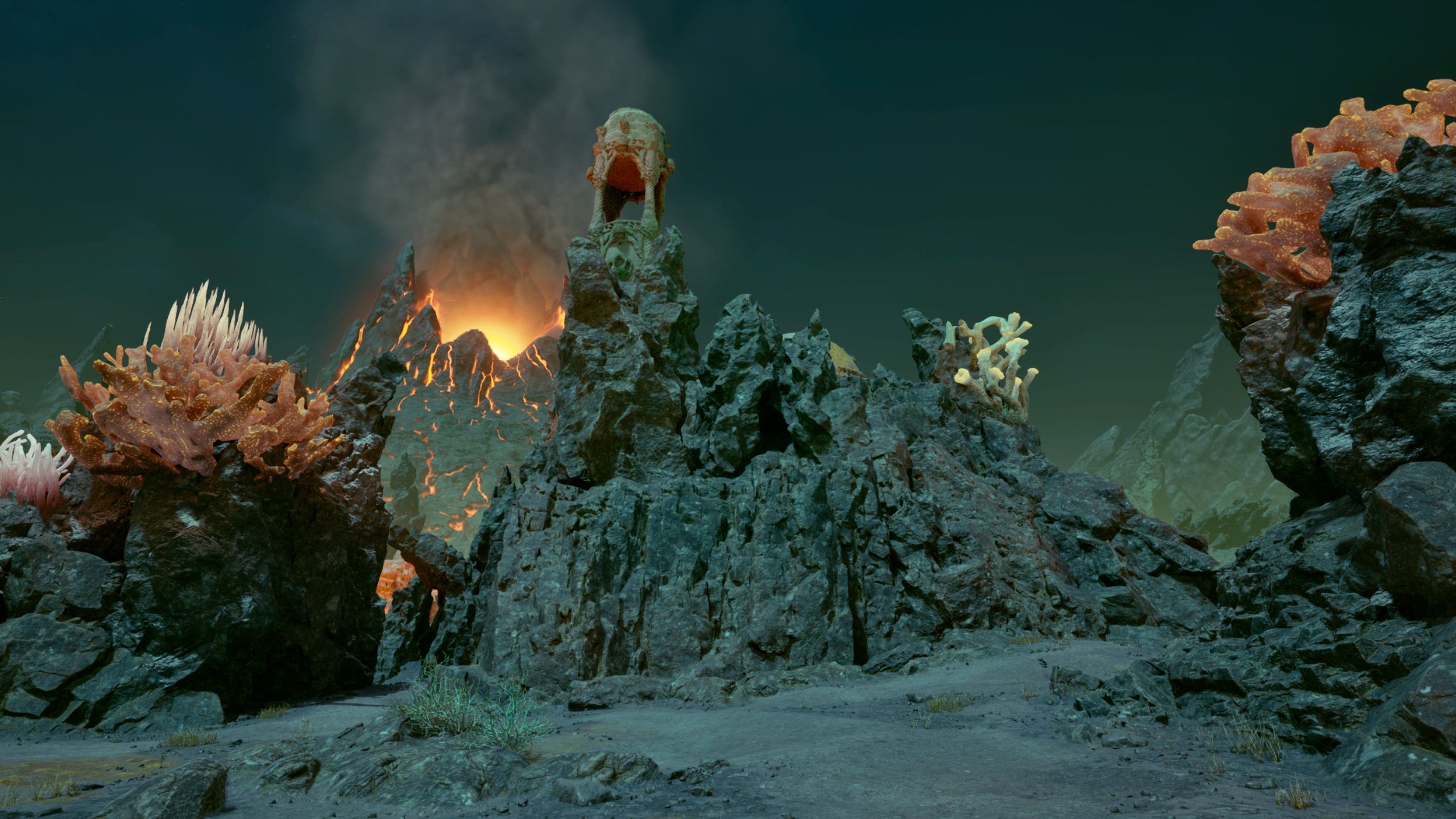
© Obsidian Entertainment/Microsoft
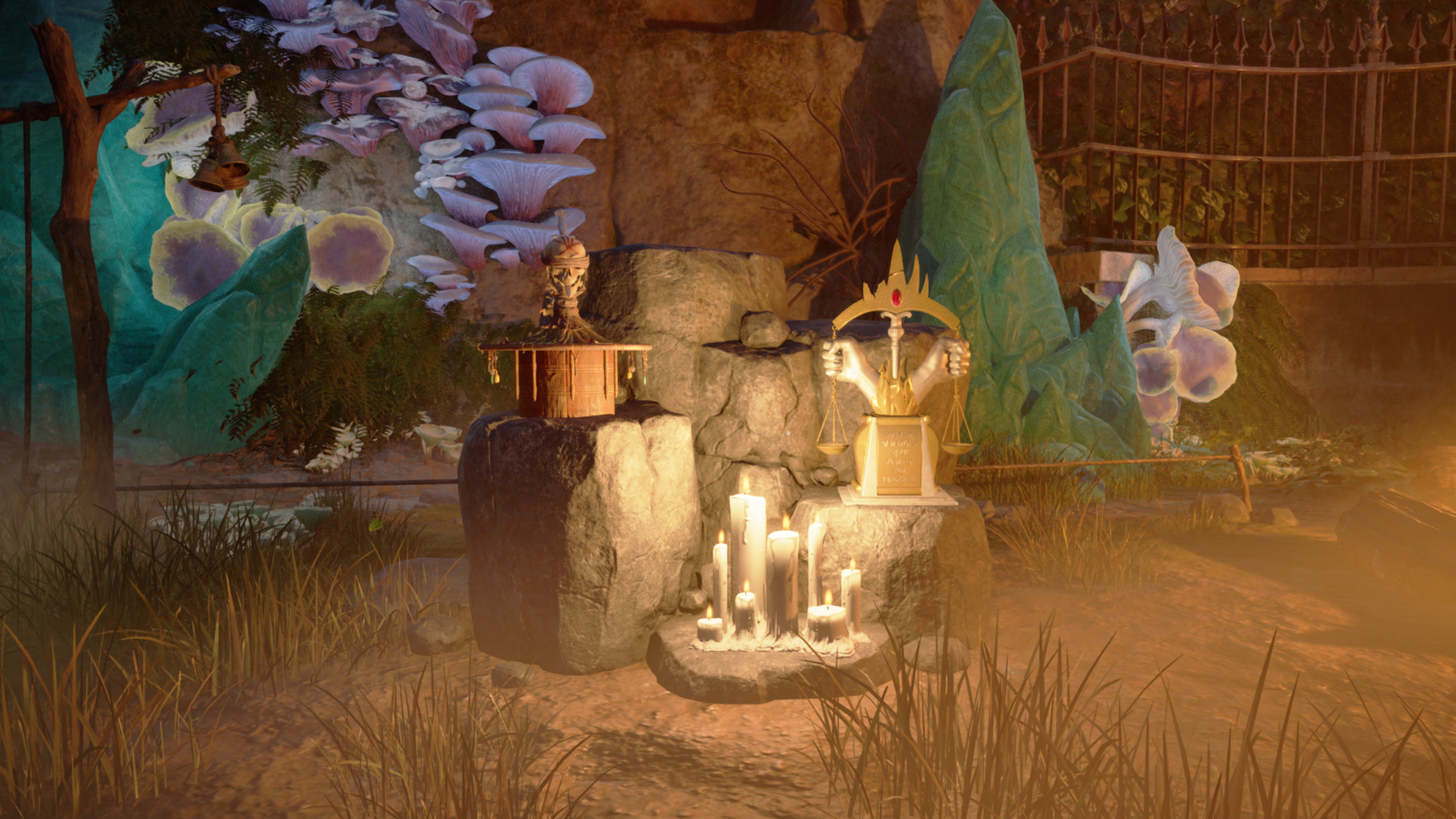
© Obsidian Entertainment/Microsoft
Game Science has just released Title Update 1.0.14.17737 which is 1.9GB in size on PC, and shared its full patch notes. This patch brings a number of fixes for Quests, Legels, Protagonist and Interaction. So, let’s take a closer look at them. Patch 1.0.14.17737 fixes an issue where the skills of the protagonist did not … Continue reading Black Myth: Wukong February 20th Patch Released & Detailed →
The post Black Myth: Wukong February 20th Patch Released & Detailed appeared first on DSOGaming.

Duet Night Abyss is a fantasy multiplayer game that’s hotly anticipated in the gacha gaming community. It’s all about cool-looking combat, grinding, and oh yeah – boobs. And based on what I’ve played so far, the busty barmaids and endless slog for incrementally better gear aren’t likely to capture your attention for very long.
I played an early PC build of Duet Night Abyss ahead of its closed beta test, with the caveat that I wasn’t able to experience multiplayer functionality, so consider this preview to be more about Duet Night’s mechanics, world, and the grand narrative that underpins it all.
Your player character, a beautiful waif in bandages, awakens in a swirling snowfield. Mysterious voices speak to you. You are helpless and breathy. But out of the snow, someone reaches for you.
It’s Berry, a major character who’ll see you through the basics of movement in this world: most notably, the Helix Jump – a slick way of vaulting yourself through the air. There’s no cooldown on that jump, and you’ll find quickly that it’s a fun and efficient way of getting around – and powerful in combat.
Once separated from Berry, you’ll really begin to come into your own – both gameplay-wise and narratively speaking. Broke in a strange new city run by the ominously named Empire, you must become a “Phoxhunter,” picking up “commissions” at a rough-and-tumble tavern owned by the world’s least believable barmaaid.
But wait. That’s only half the story.
There’s a second protagonist, a male version who looks strikingly similar to the girl you just met. The idea is that these two show different sides of the same narrative. In the city, the girl sees townsfolk experiencing discrimination, violence, and cruelty at the hands of the Empire. Meanwhile, the boy is a part of the Empire, commanding the same brutish soldiers who are now wounded and pitiful after battle.
Much has been made of these dual protagonists and plotlines, but frankly, I don’t think they’re as revolutionary as the developer seems to think they are. There were no surprises, no events in one character’s story that might make the other’s revelatory. Of course, this is early on, and I hope to be proven wrong as more story content becomes available.
Anyway, solid story or not, this game’s art is beautiful. I loved the linework, the colours, the fluid animation. I tend to approach the anime aesthetic with skepticism, so trust that my praise says something about how polished and breathtaking the aesthetic was. Unfortunately, I began to feel less enthusiastic the boobier Duet Night became (more on that later).
The English voiceover is absolutely fantastic, one of Duet Night’s highlights. As I progressed and met more characters, I found each one’s voice and dialogue distinct and full of individual personality.
Once you’re through the initial story quests, you’ll be participating in a lot of combat. It’ll be familiar to anyone who has ever played any kind of hack-and-slash, but it’s fun for a while. All the shiny sword slashes and oversized guns look epic, especially paired with the Helix Jump ability.
Switching between melee and ranged weapons is seamless. And to really hone your killing skills, you can equip the ridiculously named Demon Wedges: equippable supplements to your weapons that bump up various stats. You can mix-and-match a few of these at any time, playing around with combinations to find synergies that could take your combat to the next level.
I still have an unclear sense of Duet Night’s intended monetization model. There are hints, of course, such as multiple currencies – I was overwhelmed trying to understand where to obtain each one, and what each one could buy. Though there didn’t yet appear to be an interface to spend IRL money, you can bet that’s coming.
I’m not going to mince words: Duet Night Abyss is a grindfest. Take the “Retrace” system, which is a dice roll to win a bunch of random new weapons to pick from. It’s literally “click a button and see what you get.” Your rewards may be epic, but are mostly not. Provided you have enough of the “Hourglass” currency, you can just hammer that Retrace button like a slot machine. It’s one of the least engaging things I have ever seen in my time as a gamer.
You can also pick up “commissions” from the aforementioned tavern, which are instances where you’ll do most of your flashy combat. They may have different themes (a church overgrown with grass, for example, or a mine), but they all follow the same formula: a bunch of rooms that look exactly the same, where you can defeat increasingly difficult – and boring – waves of monsters.
You can grind for weapons to craft into better weapons. Grind for coins to buy cosmetic items, like a chicken for your head. Grind to obtain new playable avatars (most of them busty women). Or you can enter “Sandrealm Meditation,” which is a euphemism for practicing your combat skills via – you guessed it – grinding.
But all the flashy abilities, gear, and flower hats you’re grinding for mean nothing without an audience to impress.
Unfortunately, I did not experience any of Duet Night's social aspects. The instances can match you up with three other players – friends or randoms – but given that I was playing before the closed beta began, there was no one for me to match up with.
Perhaps Duet Night will feel like less of a grind as it opens up to players and a community grows, though I’m not sure at this stage what that would look like.
I recognize that grindy games do have an audience, but as a game reviewer, I feel icky recommending them when there are so many more engaging, delightful, and dare I say interactive games out there.
In the beginning, I thought I might like Duet Night Abyss. In those first moments I felt like I was watching a beautifully animated film, and intrigued where the waif’s story might lead me – even if I did have to grind my way there.
But then the, uh, curvaceous women began appearing. This isn’t uncommon in anime – but it immediately narrows the audience down to one of… specific tastes. I personally felt isolated: as slick as Duet Night Abyss was, I could never fully appreciate the better parts of it, such as the art or cute side quests, knowing that this game wasn’t looking for players like me.
There’s an audience out there for Duet Night Abyss. But it isn’t me. Maybe it’ll be you.
Obsidian has released the first major update for its latest RPG, Avowed. Title Update 1.2.2 is 66GB in size and brings a lot of tweaks, fixes and improvements. So, let’s see in more detail what this patch brings to the table. Patch 1.2.2 packs major Companion & NPC improvements. Reviving companions in combat now restores … Continue reading Avowed Update 1.2.2 Released, Is 66GB in Size, Full Patch Notes →
The post Avowed Update 1.2.2 Released, Is 66GB in Size, Full Patch Notes appeared first on DSOGaming.
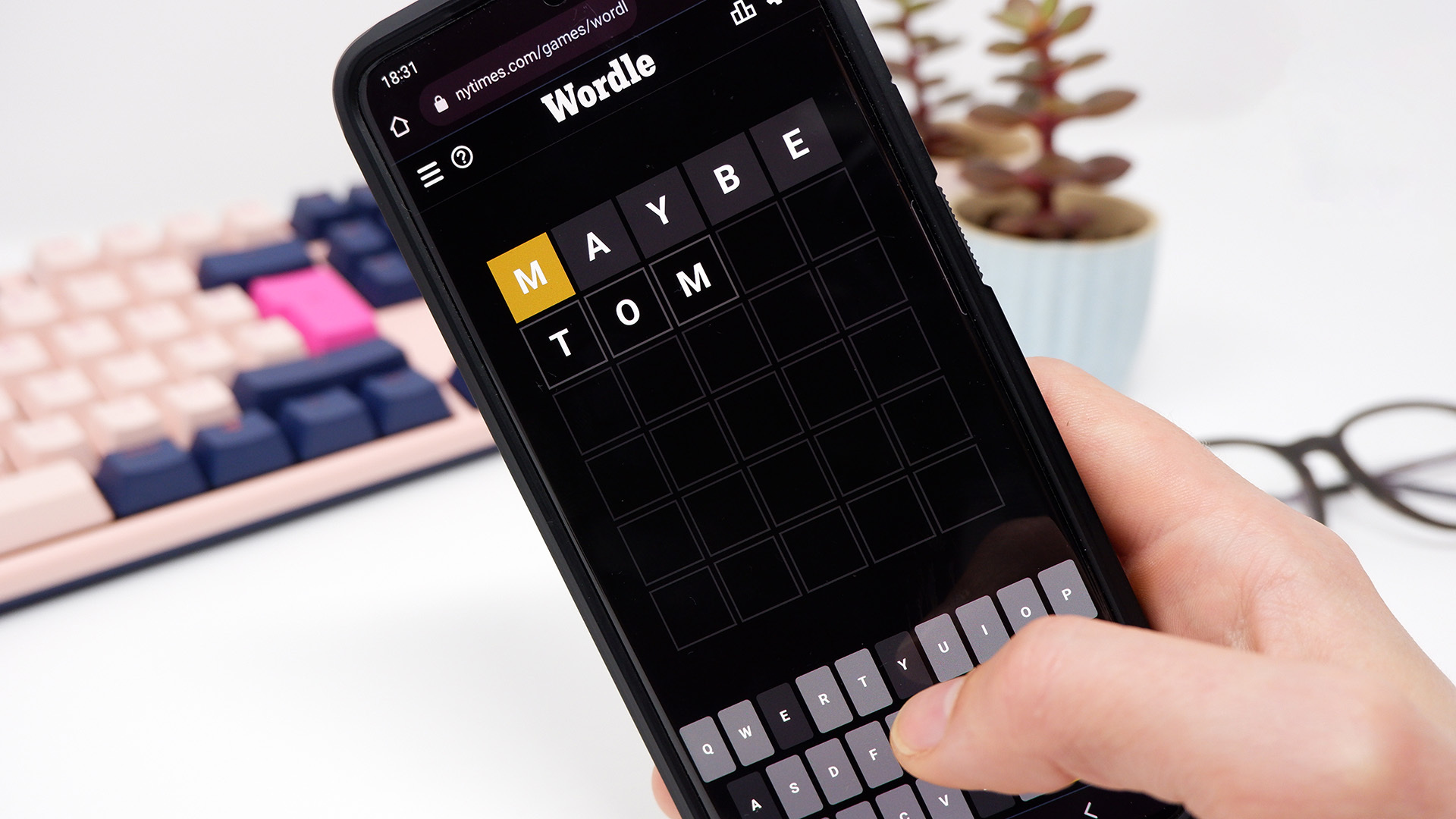
© null

The Apple iPhone is one of the most innovative inventions of the 21st century. To date, over 2.3 billion iPhones have been sold across the world. It's arguably one of the most revolutionary devices ever created. With 17 years since the first iPhone, it can be easy to get lost thinking about how many iPhone generations there have been. Apple released multiple iPhone lines in some years, and every year new phones are released regardless. Below, we've compiled every iPhone ever released in chronological order. With the latest iPhone being the iPhone 16e, there's an extensive history to uncover from 2007 to 2025.
In total, there have been 24 different iPhone generations. The first iPhone debuted in 2007, and at least one new model has been released in each year following. This list counts separate models like the Plus or Max series with the mainline iPhone generation, but we did include new models like the iPhone SE 2 and the iPhone XR as separate entries.

The revolutionary first iPhone was released on June 29, 2007. Revealed as a device that was capable of iPod, Phone, and Internet functionalities, the iPhone marked the large first step in the smartphone market we know today. Apple made a huge departure from traditional cell phones, choosing to eliminate the keyboard and offer a digital option within the screen. With its 3.5-inch display and 2 megapixel embedded camera, the iPhone is a fun device to look back on as it changed the world of technology forever.
The second iPhone ever released was the iPhone 3G. This device brought 3G functionality to the iPhone, allowing for much faster speeds when utilizing cellular data. Additionally, this iPhone was the first to include the Apple App Store, which opened the door to developers creating applications for mobile phones.

iPhone 3GS was the first iPhone to introduce a camera upgrade, with a new 3 megapixel camera on the back of the phone. This allowed for clearer pictures, further moving the smartphone into replacing traditional cameras. Additionally, new storage options were introduced to allow users to download more apps on the App Store. Performance overall was also claimed to be twice as fast as the iPhone 3G.

FaceTime was the star of the iPhone 4, allowing for users to video call between devices from any given location. iPhone 4 featured a 5 megapixel camera, allowing for HD video capture for the first time. This camera also included an LED flash, which had not previously been available on the iPhone. Alongside these features, the iPhone 4 offered Apple's first Retina display, which sharpened the display to make text much more readable.

Most notably, the iPhone 4S is best known for the debut of Siri. The virtual assistant has gone on to be a staple of the Apple ecosystem, and it all started here. The iPhone 4S also featured 1080p video capture, thanks to its 8 megapixel onboard camera. Other major software like iCloud, iMessage, and more made their debut here on the iPhone 4S.

iPhone 5 was the first iPhone to support LTE technology, which created opportunities for large tasks and content to be available on cellular data. Audio was also a major focus, with new microphones added for crystal clear audio across both calls and FaceTime. This device was also the first iPhone to feature the Lightning port, a large departure from the previous 30-pin adapter.

The iPhone 5S marked the first appearance of Touch ID, a new technology that allowed you to unlock your iPhone by holding your finger against the home button. This became a staple in all future models up until the iPhone X. Alongside this feature, the iPhone 5S packed in the A7 processor and new camera technologies.

The iPhone 5C was Apple's first budget conscious iPhone. Released alongside the iPhone 5S, the 5C was made available in vibrant colors that caught the attention of anyone passing by. Internally, the device utilizing the same hardware as the iPhone 5 from 2012, so Apple was able to offer the 5C at a lower, more approachable price, making it one of the cheapest iPhones.

The iPhone 6 took a departure from the boxy design previously seen in the last three generations and offered a slimmed out device perfect for any pocket. Arguably, the biggest feature of the iPhone 6 was none other than Apple Pay, which was powered by NFC technology embedded inside the phone. This was also the first iPhone generation to introduce multiple models, with the iPhone 6 Plus offering a larger 5.5 inch screen.

The flagship feature of the iPhone 6S was 3D Touch, a technology that allowed the screen of the device to measure and take in different amounts of pressure. This allowed for multiple commands depending on how firmly you pressed against the screen, which led to new gestures all around. Additionally, the iPhone 6S was the first iPhone to have 4K video capabilities, which paved the way for iPhone to be used for filming.

The iPhone SE (Special Edition) brought back the body style of the iPhone 5S and packed it with new, updated features. Capabilities from the iPhone 6S such as 4K video were included on the SE, offering a quality and compact option at a lower price point. This marked the first iPhone SE, with two more generations produced in the years following 2016.

iPhone 7 launched in Fall 2016 with a huge controversial twist - Apple decided to remove the headphone jack. This move shifted audio to either Bluetooth or through the Lightning port. This generation also added water resistance to the iPhone, in addition to a sturdy home button that utilized Apple's Taptic Engine for haptic feedback. Lastly, the iPhone 7 Plus was the first iPhone to offer a dual camera system.

iPhone 8 was largely the same design as the iPhone 7, with a few solid improvements to help the device stand out. First, wireless charging was added with a glass panel placed on the back of the iPhone. For the first time, you did not need to charge the phone through the Lightning port. Further, the iPhone 8 was the first phone to introduce the True Tone display. This display changes the colors and brightness of your device depending on your environmental surroundings.

The iPhone X was a huge departure from prior models, serving as the company's vision 10 years after the release of the original iPhone. The device made away with the home button, opting for a phone made entirely of just screen. New facial recognition technology called Face ID was revealed, which allowed users to unlock the iPhone X by directly looking at it. The iPhone X shaped all models that released after it, with each new iPhone utilizing a similar display and Face ID tech.

The iPhone XS was a minimal improvement over the iPhone X, but there are some decent upgrades that future models benefitted from. Water resistance A largely overlooked new feature in the iPhone XS was the addition of a dual-SIM tray. This opened up the ability to load multiple SIM cards into one iPhone, which was a godsend for travelers overseas.

The iPhone XR acted as 2018's budget friendly iPhone model. This device utilized a LCD display instead of the OLED display found on the iPhone X and iPhone XS. It also included only one camera on the back, similar to iPhone 8. Overall, the iPhone XR offered a similar experience to the premium iPhone X and iPhone XS at an affordable price point.

iPhone 11 increased the standard screen size across base models to 6.1 inches, moving from a Super Retina display to a Liquid Retina display. The device also opted for an Ultra Wide camera over the Telephoto camera found in prior dual camera models. The iPhone 11 was also the first generation to offer Pro models, which contained Super Retina displays, a triple camera setup, and HDR support.

The iPhone SE 2 was a large improvement over the first SE model, with a new A13 Bionic chip that drastically improved performance. The screen size increased from 4 inches to 4.7 inches, with a True Tone display to offer the best picture quality no matter your environment. Additionally, Haptic Touch was added to the iPhone SE 2, as it was not present on the first model.

The iPhone 12 introduced MagSafe, a feature that allowed certain chargers and accessories to magnetically connect to the back of the iPhone. The base models received the Super Retina XDR display, providing a gorgeous OLED panel at an affordable price. iPhone 12 also added a Ceramic Shield, which proved to be tougher than glass and much more durable over time.

iPhone 13 brought massive leaps in battery life, with up to 19 hours of video playback. New features for photography were also introduced, like Cinematic Mode, which automatically focused on objects for perfect transitions every time. The iPhone 13 Pro models featured ProRes video, a type of capture that allowed for raw 4K30 videos.

Released in the Spring of 2022, iPhone SE 3 brought back the home button for the first time in five years. Additionally, this model included 5G connectivity to take advantage of the new 5G towers that began popping up in 2021. Many of the photography features that were released in between the SE 2 and SE 3 were added to this model, including Night Mode, Photographic Styles, and more.

iPhone 14 brought new features like Emergency SOS, which utilizes Satellite connectivity to reach response teams in the event of an emergency. Additionally, the camera system across all models received sizable upgrades, such as improved ultrawide and zoom lenses. This generation also marked the return of the Plus model, a standard iPhone 14 with a larger screen.

The previous iPhone generation is now the iPhone 15. Similar to the iPhone 14, a standard, Plus, Pro, and Pro Max model are all available to purchase. The biggest changes with this generation mostly occur with the Pro models, with a new lens, titanium frame, and action button to replace to mute switch. Of course, by far the biggest change is the switch from Lightning to USB-C, which was made due to new EU regulations.

Apple officially revealed the iPhone 16, iPhone 16 Plus, iPhone 16 Pro, and iPhone 16 Pro Max back in September 2024. The biggest updates to the latest generation iPhone are faster CPU performance, a customizable action button, and the integration of Apple Intelligence.
In our review of the iPhone 16 and iPhone 16 Prom Max, we detailed all of the differences the latest phones received over the last generation.

Apple has revealed the new iPhone 16e, announcing that would replace the outdated iPhone SE line from 2022. As the cheapest new iPhone, it comes with a price tag of $599, which is only $200 less than the standard iPhone 16. It's the first phone to feature Apple's C1 cellular modem, which we haven't had the chance to test just yet.
The iPhone 16e will be available to preorder on February 21 and will be officially released on February 28.
Although the new iPhone 16 was announced not that long ago, you may already be looking forward to the next generation. We know very little about the iPhone 17, but we can assume that Apple will release those phones around the same time as the iPhone 16. That means you can likely expect to learn more about the iPhone 17 in September 2025
Noah Hunter is a freelance writer and reviewer with a passion for games and technology. He co-founded Final Weapon, an outlet focused on nonsense-free Japanese gaming (in 2019) and has contributed to various publishers writing about the medium. His favorite series include Xeno and Final Fantasy.

Dungeon crawler board games are easily one of the deepest genres in the hobby – both in terms of gameplay as well as the sheer amount of fantastic options. Because there are so many great board games to choose from, it can be difficult to know where to begin. Dungeon crawlers can run the gamut from horror to fantasy and just about everything in between. Even franchises from Marvel to the Teenage Mutant Ninja Turtles have tried their hand in the space and have been met with great success.
Defining the dungeon crawler genre can be a contentious topic among tabletop enthusiasts, but these games typically include tactical combat, character progression, loot, and, of course, dungeons. These dungeons don’t have to be literal, however. In fact, some of the best board games in the category aren’t stereotypical monster-battling RPGs set in a fantasy world. One other thing these titles do generally have in common, though, is that they are rich in lore and mechanics. For those looking for lengthy cooperative campaigns, you have come to the right place.
Gloomhaven arguably set the standard for deep dungeon crawler board games, but the original is currently out of print. Fortunately, its follow-up, Frosthaven offers an equally engrossing campaign set in the same universe. Gloomhaven: Jaws of the Lion, on the other hand, gives gamers a streamlined option that requires far less prep time – addressing one of the original’s few critiques. The two games themselves are interconnected; even the characters created in one can transfer over to the other. Jaws of the Lion is arguably a better starting point for newer players due to its decreased setup time, but fans of fantasy epics can’t go wrong with either.
Both titles serve as a sort of choose-your-own-adventure novel meets tabletop game. The respective campaigns are long and rich with both lore and adventure. Characters within the game will even depart after completing their primary objectives, serving as a bittersweet moment where players say goodbye to old familiar faces but excitedly welcome in new ones. Both options are great cooperative multiplayer titles, serving as some of the best board games for two players and the best board games for four players.
For more information about both of these tabletop masterpieces, check out our review of Gloomhaven and hands-on impressions of Frosthaven.
While lots of dungeon board games feature plenty of plastic eye candy in the form of plastic figures, seasoned gamers will be aware that’s only half the story. This third, fully cooperative iteration of the Descent dungeon-crawling franchise fills the gap with a jaw-dropping lineup of 3d cardboard scenery to furnish its dungeons, and a cavernous box to store it all in. Of course that’d all be just window dressing if the base game were no good, but it’s a clever mashup of tabletop tactics, dice rolling, and app-based resource management, allowing you to easily implement crafting, levelling up and all the other fun stuff for your characters while also enjoying randomized dungeon layouts in an engrossing narrative campaign. Its a great RPG board game as well as an amazing dungeon crawler.
For our take on this game, you can check out our in-depth Descent: Legends of the Dark review.
Not all dungeons have to be fantasy labyrinths deep underground: the maze-like maintenance corridors of an Imperial base serve just as well. That’s the setup for this Star Wars dungeon crawler, in which a plucky band of rebel operatives work together against another player controlling the Empire’s forces across a scenario-based campaign. You might be swapping swords and bows for lightsabers and blasters, but the feels are very much the same as you loot crates, explore secrets and level up as you attempt to take down the bad guys in tactical melee combat. But as a bonus, you’re likely to run into a whole range of your favorite characters from the Star Wars universe to fight alongside you. This is just one of many Star Wars board games out there, but it's a great one.
Veterans of this hugely popular video game will be well aware of its deck-building roots so it's only a tiny hop to turn it into a tabletop experience. The advantage of going so, aside from a bit of new content and mechanical streamlining, is that you can now climb the spire - a dungeon you ascend rather than crawl - alongside your friends, working together to defeat whatever of the spire's many potential monstrous denizens and bosses the game chooses to send your way, making the experience social as well as strategic. And all the addictive magic of carefully curating your cards and slinging them into tactical action against all manner of foes is very much still intact.
We had the chance to review Slay the Spire: The Board game and loved every second of the gameplay.
Mansions of Madness: Second Edition is an engaging cooperative mystery horror game. Each player selects one of eight investigators to solve puzzles and collect weapons while attempting to fight off both monsters and insanity. Meanwhile, an intricate set of mysteries begins to unfold. The box contains four different scenarios that range from 60-360 minutes with the latter boasting quite a deep and engrossing campaign. Aiding in the immersive storytelling is an app that narrates the story and keeps track of various player actions. Apps in board games are either a pro or a con depending on who you ask, but it is widely agreed that Mansions of Madness: Second Edition got it right with this one. Not only does the app add to the tension with its eerie music and excellent voiceovers, but it also helps streamline the game, making it easier to start and teach.
Don’t let the “2” in the title fool you; this follow-up is quite the departure from its predecessor. Sequels can often be offputting for those unfamiliar with the original, but just about any tabletop fan can pick up Massive Darkness 2: Hellscape, throw some dice, slay some monsters, and have a great time, regardless of their familiarity level with the series. Massive Darkness 2 follows many of the classic dungeon crawler tropes, but it sets itself apart with six unique character classes that play differently from one another while still feeling cohesive. Beating down monsters, looting dungeons, leveling up, and upgrading gear is a satisfying loop that can be played across a wide variety of scenarios. Not to mention, the various classes included in the box change up the game so much that replaying as a different character feels like a wholly unique experience.
While the Alien franchise does have several licensed board games, arguably none of them embody the spirit of the series quite like Nemesis. No, Nemesis doesn’t have any official ties to the film saga, but the creeping terror that accompanies sneaking through corridors while attempting to avoid dangerous aliens will likely be a familiar feeling to fans. To further ramp up the tension, Nemesis gives players objective cards that affect their approach to the game – several of these cards require players to go against the best interests of other players. Because these cards are kept hidden until the end of the game, it’s difficult to know who to trust. Still, as survival is the main objective, teamwork is generally required. On the surface, everyone is striving toward the same goal, but you never know whether a traitor is secretly operating amongst the crew.
Alongside the base game, there are quite a few Nemesis expansions you can purchase separately as well as additional miniatures.
Cthulhu: Death May Die is a cooperative horror game inspired by H.P. Lovecraft. There are various standalone scenarios packed in, but the story generally involves stopping a dangerous ritual meant to summon powerful beings. Interestingly, the characters in Cthulhu: Death May Die gain strength as their remaining sanity dwindles throughout the game. This is a sort of risk, reward mechanic, however, as losing track of your character’s sanity entirely could spell disaster. Unlike some other popular dungeon crawlers, Cthulhu: Death May Die is rather easy to pick up – even if it can be difficult to beat. Seeing as the different scenarios don’t have to be played with the same group of players, this dice chucker is even more accessible.
Clank! Catacombs asks players to do it all; fight monsters, free prisoners, collect gold, and beware the dragon. There are several great iterations in the Clank series, but Clank! Catacombs dives most into the dungeon crawler genre, and it’s arguably the best entry in the franchise to date. What makes this installation great are various tiles that expand the map as you play, essentially turning Clank! Catacombs into a tabletop roguelike. As these tiles are shuffled before each game, no two playthroughs of Clank! Catacombs are the same.
While fans of the dungeon crawler genre generally appreciate massive boxes with dozens of detailed miniatures, Clank! Catacombs opts for a smaller footprint thanks to most of the game playing out through various cards and tiles. So, if your board game closet or bookshelf is starting to get a bit overstuffed, Clank! Catacombs might just be the dungeon crawler to grab.
The Zombicide titles are an incredibly popular series of cooperative survival board games, but Marvel Zombies is arguably one of the best entries to date. Taking inspiration from the What If comic series, Marvel Zombies – A Zombicide Game takes the outbreak to the heroes of the Marvel universe. Marvel Zombies isn’t just a reskin of the popular series, either. For one thing, Marvel Zombies lets players play as the zombies. Additionally, new mechanics change up the formula and streamline the classic experience, so even experienced Zombicide players might want to check out this iteration. Not to mention, the various miniatures are fantastic for fans of the comic book characters. Not unlike the more traditional Zombicide titles, there are plenty of expansions to the Marvel Zombies line. Additionally, there are plenty of great Marvel board games for those looking for even more fun in the comic book universe.
Teenage Mutant Ninja Turtles: Change is Constant is arguably one of the most underrated dungeon crawlers in the medium. Perhaps the biggest knock against TMNT: Change Is Constant is that those who aren’t fans of the franchise won’t likely find much of interest here. That said, fans of TMNT will likely love the various miniatures, character cards, the scenario booklet, and even the lovely box itself. Aside from the fanfare, Change is Constant introduces a unique mechanic where part of the player’s dice roll impacts their adjacent teammates. This makes TMNT really feel like a cooperative game true to its theme. Change is Constant can be played as a fully cooperative game or as a one-versus-many experience with one player operating as the villain. Either option offers an excellent experience, making TMNT: Change is Constant ideal for four or five players.
There are already great horror recommendations on this list, but fans of the historic video game franchise may want to check out Resident Evil: The Board Game. The cooperative survival horror game is set in the iconic Spencer Mansion and features recognizable characters from the series. Like the video games, Resident Evil: The Board Game features puzzles that unlock new areas of the map, limited resources, and, of course, plenty of zombies.
Unlike the Resident Evil video game series, however, the board game versions of Resident Evil 2 and 3 both came out before the original. Also unlike the video game series, the original is arguably the best. That being said, all three titles are worth checking out for fans of the franchise, with Resident Evil: The Board Game serving as an ideal starting point.
In a genre full of gruesome monsters and darker themes, Arcadia Quest opts for a different approach with a chibi art style. This welcoming aesthetic is matched by its easy-to-pick-up gameplay. However, Arcadia Quest adds a slight competitive twist with PvP quests that ask players to face off against each other during a scenario. While dungeon crawlers can often be entirely cooperative, Arcadia Quest plays against type and appearance a bit through these mandatory face-offs. Unfortunately, this means Arcadia Quest cannot be played solo. Seeing as how the game is built around a campaign, it means you’ll probably want the same group of players at the table each time as well. That might be a bit of a barrier to entry for some, but those who can manage to wrangle up some friends or family members to play through an entire campaign are in for a fantastic dungeon crawler loaded with personality.
For even more recommendations check out the best cooperative board games or even our best board games for adults. Those looking for titles that offer a bit of something for everyone may want to peruse our list of the best family board games.
Bobby Anhalt is a contributing freelancer for IGN covering board games and LEGOs. He has more than 8 years of experience writing about the gaming industry with bylines at Game Rant, Screen Rant, TheXboxHub, and Ranker. You can follow him on Twitter.

On Wednesday morning, Apple pulled the wraps off the iPhone 16e, now the cheapest model in the company's current lineup. It essentially replaces the outdated 2022 iPhone SE as the "affordable" option, but it marks a shift away from the significant discount the older SE line was known for. The iPhone 16e starts at $599, narrowing the gap between it and the $799 iPhone 16 that came out last fall. It will be available for pre-order starting Friday, Feb. 21 with the street date following the next week on Friday, Feb. 28.
The iPhone 16e is also the first phone to feature Apple’s C1 cellular modem. Apple has had a lot of success with its in-house chips, such as the M1 and up in its computers and the A-series chips in its mobile devices. The cellular modem is a critical but oft-overlooked element in phones, and if Apple hasn’t stuck the landing on the C1, it could mean all sorts of connectivity issues. Hopefully Apple learned its lesson from the “Antennagate” scandal – when iPhone 4 struggled with cell signal strength because of the design and placement of the antennas – and ensured the iPhone 16e’s connectivity is up to snuff.
From the front, you’d be hard pressed to tell this phone apart from the iPhone 14. The specifications of the display are identical, offering a 6.1-inch OLED with a 2532x11170 resolution panel and 1,200-nit peak brightness. This isn’t as sharp or nearly as bright as the iPhone 16. The iPhone 16e does get the Action button and a USB-C port, though it misses out on the Camera Control.
Around the back, the iPhone 16e is more distinct from its iPhone kin, as it has just a single camera, much like the iPhone SE before it. It’s a 48MP sensor with a lot in common with the current iPhone 16’s main camera, but Apple reserves a few elements for the higher-tier phone, like sensor-shift stabilization, the latest version of Photographic styles, and the ability to adjust focus in portrait mode. Meanwhile, the selfie camera appears to be identical and brings Face ID to the iPhone 16e.
The phone is cased in aluminum, a glass back, and Apple’s Ceramic Shield on front. While Apple still suggests that this Ceramic Shield is “tougher than any smartphone glass” in its press release, it’s worth noting that Apple itself offers a newer blend of Ceramic Shield that claims to be “two times tougher than any smartphone glass.” That certainly raises some question about how tough the older Ceramic Shield on the iPhone 16e really is, especially when I saw plenty of wear and tear on the display when I reviewed the iPhone 16.
The internals of the phone are an interesting demonstration of product stratification. There was already a gap between the iPhone 16 and 16 Pro in that the Pro models got an A18 Pro chip with faster speeds and more GPU cores. While the iPhone 16e is packing an “A18” chip like the iPhone 16, it’s not quite the same. It has the same number of CPU cores, but it only gets a 4-core GPU, down from the iPhone 16’s 5-core GPU. Given the iPhone 16’s small performance deficit next to the iPhone 16 Pro, I’d expect the iPhone 16e to take yet another step down. Still, with the Neural Engine intact on the iPhone 16e, it will be able to tap into the various Apple Intelligence features, for whatever that’s worth.
Naturally, there is some compromise for the iPhone 16e – there had to be for it to land with a lower price than the other phones in Apple’s roster. All told, it doesn’t seem overly compromised, but it’s also not carrying as much of a discount as the early iPhone SE models did. Coming in at $599 may make it Apple’s cheapest phone, but Apple’s last budget model, the 2022 iPhone SE, launched with a $429 price tag while carrying the same chip as the then $799 iPhone 13. Its design was very dated at the time, but there was no ignoring the nearly 50% discount it provided. This time, Apple is at least basing the iPhone 16e on a design that’s just a couple years old, even if it's gotten minor tweaks every year since 2018.
We’ll have to see how well the iPhone 16e actually performs. But with the Android market already offering some compelling iPhone alternatives around $600, like the OnePlus 13R, Apple may have a hard time courting buyers who aren’t already locked into the Apple ecosystem.
Mark Knapp is a contributing freelancer for IGN covering everything electronics and gaming hardware. He has over 10 years of experience in the tech industry with bylines at PCMag, Reviewed, CNET, and more. Find Mark on Twitter @Techn0Mark or BlueSky at @Techn0Mark.

It’s time to mobilise fellow bargain hunters because the new discount list just dropped. Leading the charge is Super Mario Bros. Wonder, a moustachioed Switch must-have alongside perennial PC classic Skyrim Anniversary for 77% less. I’m also mega impressed by a similar percentage off Shin Megami Tensei V on Xbox plus an all-out war on the RRP of Space Marine 2 on PlayStation. These deals won’t last forever, friends, so loot ‘em while they’re hot.
In retro news, I'm celebrating the 22nd birthday of Rez, Tetsuya Mizuguchi's synesthesia masterpiece. One part Panzer Dragoon on-rails shooting and another part LSD degrees of "ohhh, I can seeee the muuuusic," this Dreamcast must-own stands up today, particularly inside of a PS VR2 headset.
- Rez (DC) 2002. Remaster
- Castlevania: Lament of Innocence (PS2) 2004. eBay
- Fire Emblem (GBA) 2004. eBay
- 40K: Dawn of War II (PC) 2009. Get
- Street Fighter IV (PS3,X360) 2009. Get
- Persona 4 Golden (PSV) 2013. Get
- Dead or Alive 5 Last Round (PS3/4,X360/O) 2015. Get
Contents
Expiring Recent Deals
Or gift a Nintendo eShop Card.
Expiring Recent Deals
Or just get a Steam Wallet Card
Xbox One
Expiring Recent Deals
Xbox One
Or just invest in an Xbox Card.
PS4
Expiring Recent Deals
PS4
PS+ Monthly Freebies
Yours to keep from Feb 4 with this subscription
Or purchase a PS Store Card.
Expiring Recent Deals
Because you need fuel. Delicious and discounted.
Adam Mathew is our Aussie deals wrangler. He plays practically everything, often on YouTube.

The ROG Ally burst onto the scene in 2023 as a great alternative to the Steam Deck, offering access to even more games thanks to it running on a Windows operating system. Last year saw the release of the ROG Ally X that not only beefed up the internals, but also made the device far more comfortable to hold with better cooling.
While the ROG Ally's biggest selling point is its portability, it's nice to have the option to kick back on the couch and play games on the TV or on gaming monitor. Thankfully, both ROG Ally models can be connected to an external display so you can experience your games on the big screen. Check out the full rundown below to find out how to connect your ROG Ally to a TV or monitor, as well as step-by-step instructions and recommendations.
There are multiple ways to connect your ROG Ally to your TV or monitor, but an adapter is a simple solution that doesn't take up much space. Whether you prefer a small dongle-style adapter, direct cable, or the official ROG Gaming Charger Dock, there are plenty of options available.
Asus has made connecting the ROG Ally to a TV incredibly easy. The best adapter option that takes up the least amount of space is the official ROG Gaming Charger Dock as it doubles as a charger for your device. All you'll need is a USB-C and HDMI cable and you're good to go! The Charger Dock also features a USB-A port that you can use to connect a mouse and/or keyboard.
If you opt for a third-party USB-C to HDMI adapter, you can connect it directly to the ROG Ally's USB-C port. Then, simply connect an HDMI cable to the adapter and your TV or monitor. If you want a one-cable solution, you can purchase a USB-C to HDMI cable that goes directly from your ROG Ally to your TV or monitor with no additional steps.
It's worth noting that some USB-C to HDMI adapters also feature a passthrough USB-C port to provide power to your ROG Ally while it's connected to an external display. If your adapter has this passthrough power port, you'll need an additional USB-C cable and your power adapter to charge the internal battery while you play.
If you'd prefer more of a Nintendo Switch-like solution, opt for a docking station. While the ROG Ally doesn't have an official docking station (outside of the ROG Gaming Charging Dock, which is more of an adapter), there are plenty of third-party options available. Docking stations allow you to place the ROG Ally into a stand to connect to your TV or monitor while charging.
The most basic docks designed for the ROG Ally feature an HDMI port and a USB-C passthrough charging port to supply power to the unit while it's connected to your TV or monitor. If you're looking for something more robust, however, there are more intricate docks that include additional USB ports for connecting peripherals such as a mouse and keyboard, external hard drives, Ethernet ports for a more stable wired internet connection, SD card slots to expand the internal memory, and even a Display Port to connect an additional display. Smaller, more portable dock options make it easy to travel with the ROG Ally and connect to larger displays while on the go. Many of the docks compatible with the Steam Deck will also work with the ROG Ally.
While you can connect a mouse and keyboard to your ROG Ally docking solution of choice, arguably the easiest (and most comfortable) experience is using a wireless controller when playing on a larger display. Thankfully, the ROG Ally is compatible with any Bluetooth-enabled gaming controller. You can see our recommendations for the best Steam Deck controllers below, which will also work with the ROG Ally.
This includes first-party options like PS5's DualSense, the Xbox Wireless Controller, or a Nintendo Switch Pro Controller, plus plenty of third-party controller options. Some controllers use a 2.4GHz wireless connection with an included USB adapter that typically offers lower latency and better range than standard Bluetooth controllers. Additionally, you can opt for a wired USB controller if you're sitting close enough to your ROG Ally or docking station for a simple plug-and-play solution.
Matthew Adler is a Commerce, Features, Guides, News, Previews, and Reviews writer for IGN. You can follow him on the site formerly known as Twitter @MatthewAdler and watch him stream on Twitch.

The next season of Daredevil is fast approaching and the creators are already thinking about what’s next, even maybe a Defenders reunion.
In a big profile on EW. Marvel Studios’ head of streaming and TV Brad Winderbaum is certainly exploring the opportunity to reunite the street level heroes of Daredevil, Luke Cage, Jessica Jones, and Iron Fist, better known as The Defenders.
While there’s nothing officially set in stone, Winderbaum tells EW, “It’s certainly exciting to be able to play in that sandbox… Obviously, we don’t have the unlimited storytelling resources like a comic book, [where] if you can draw it, you can do it. We’re dealing with actors and time and the massive scale of production in order to build a cinematic universe, especially on television.”
He adds, “But I can just say that all those variables taken into account, it is certainly something that is creatively extremely exciting and that we are very much exploring.”
We already know Daredevil: Born Again will be a direct continuation of the Daredevil story started on Netflix. And that Netflix did briefly host their own Marvel universe albeit on a smaller scale thanks to shows like Jessica Jones, Iron Fist, and Luke Cage. Based on Winderbaum’s comments, Daredevil: Born Again could be a launchpad to revive all those characters on Disney’s own terms through Disney Plus. After all, the new season already includes Jon Bernthal’s Punisher, so that’s another Netflix hero officially transferred over.
For now, we’ll have to see what happens in Daredevil: Born Again when it premieres on March 4 before speculating how Daredevil can tie into the larger MCU.
Matt Kim is IGN's Senior Features Editor.

A new Street Fighter movie has selected its challenger, I mean, director.
The Hollywood Reporter says Kitao Sakurai, writer, director, and executive producer on the absurd comedy show The Eric Andre Show, will direct a new film adaptation of Street Fighter for Legendary Entertainment.
Capcom is said to be “deeply involved” with the adaptation with the movie already given a March 20, 2026 release date.
This will be the latest attempt at bringing Street Fighter to the big screen, though who can ever forget the 1994 film starring Jean-Claude Van Damme as Guile, Ming-Na Wen as Chun-Li, and the late Raul Julia as M. Bison. A masterpiece, even if critics at the time didn’t think so.
No word yet on casting, but you can probably expect to see some of your favorite Street Fighter characters appear in this one.
A previous version of this film initially had Talk to Me directors Danny and Michael Philippou attached to helm the film, but they departed the project in the summer of last year. The choice of Eric Andre Show alum Sakurai could mean that Legendary is moving in a new, more absurdist direction for the film. As a fan of the more cartoony elements of Street Fighter, I’m actually excited if this is the case.
In the meantime, you can play the most recent Street Fighter game, Street Fighter 6 which recently released its newest fighter, Mai Shiranui. Check out our full Street Fighter 6 review here.
Matt Kim is IGN's Senior Features Editor.
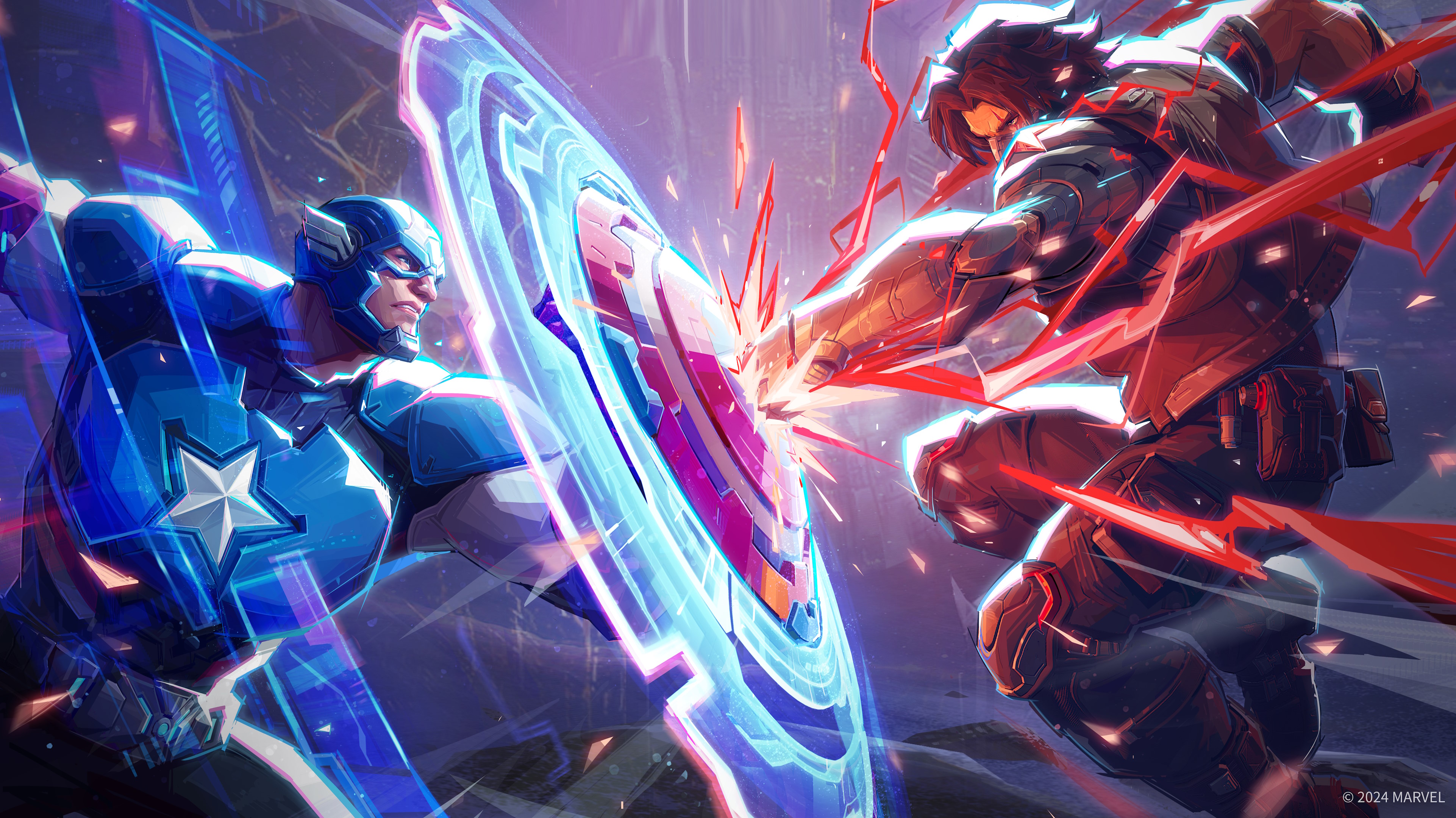
© NetEase
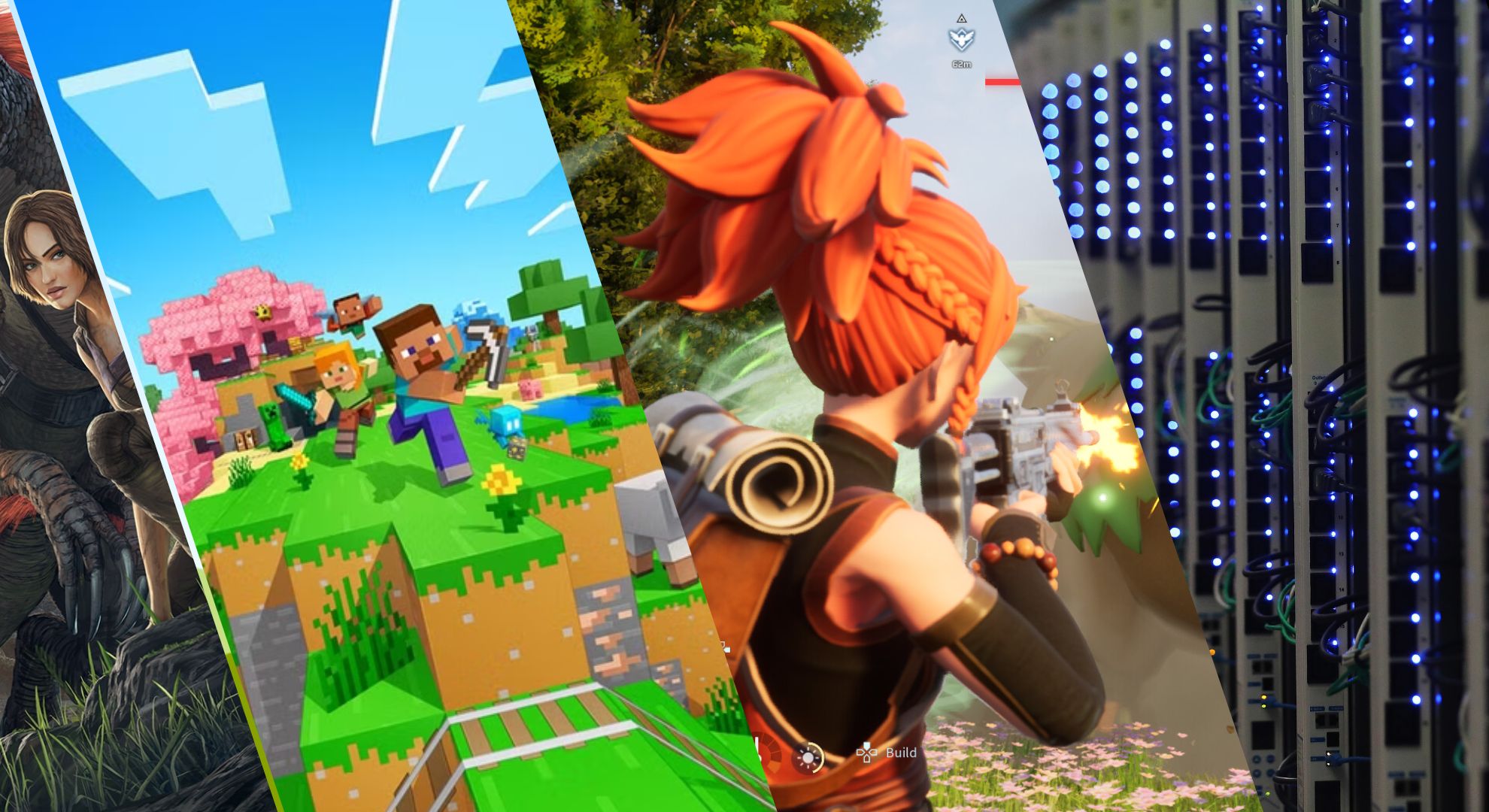
© Future
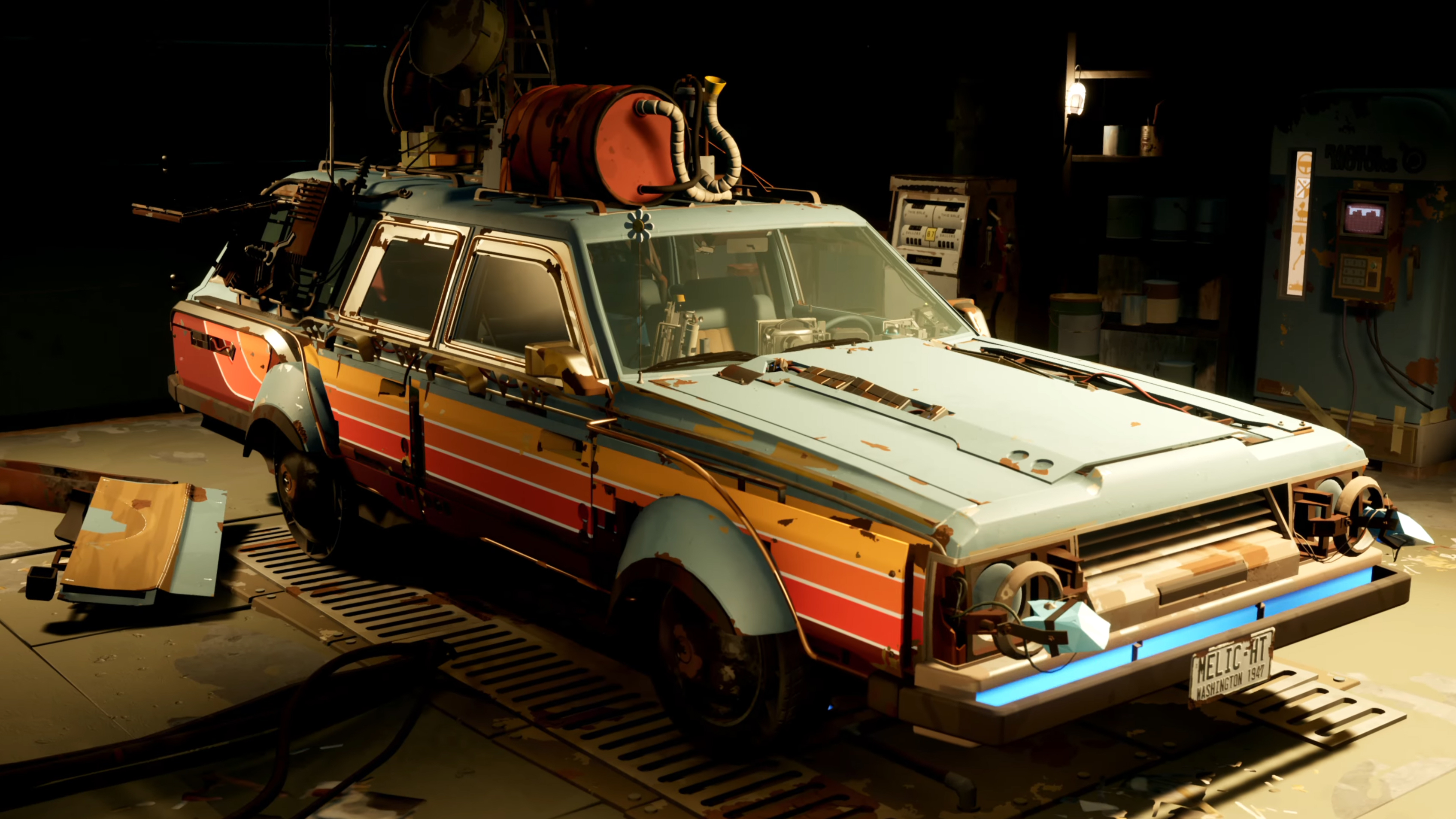
© Ironwood Studios

© Humane

After roughly a decade in development, Lost Soul Aside is finally scheduled for a launch. Originally the passion project of solo developer Yang Bing, Lost Soul Aside has grown to become a major Sony-published title under the company's 'China Hero Project,' with Bing now the founder and CEO of Shanghai-based studio Ultizero Games.
With a release date of May 30 on PlayStation 5 and PC closing in, IGN had the opportunity to sit down with Yang Bing to discuss the long road to launch. So many years of development went into this single-player action game, escalating from a solo creator's vision to a trailer reveal at Sony's State of Play. Through it all the hype has grown, with some calling Lost Soul Aside an exciting mix of Final Fantasy characters and Devil May Cry combat — even from the moment Yang Bing's initial reveal video went viral in 2016.
With the help of a translator, IGN asked Yang Bing about the early origins of Lost Soul Aside, its inspirations, what challenges the team has faced over the years, and much more.
It's been almost nine years since the first glimpse of Lost Soul Aside, on your YouTube channel. How did you get started on this project, and how old were you at the time?
Yang Bing: So I remember our first promotional video was released in 2016. I was born in 1990, so when the video was released, I was about 26 years old, so that was actually when the project started. I remember [Lost Soul Aside] probably started around, at the end of 2014, the beginning of 2015.
What were the original inspirations behind Lost Soul Aside? Has that ever shifted over the course of development?
Yang Bing: So personally, I have loved playing games since I was young. And of course, back at that time, I had some personal favorite genres. Later on, [my] passion towards games wasn't changed, didn't change a lot. So I wanted to develop something that I really like. And then the tools and game engines were relatively mature. So that was the beginning of [Lost Soul Aside].
The overall style and then, the inspiration, has not changed that much. From the beginning, the beginning of 2016 until now, about like nine years or 10 years, it continues to feature a blend of fantasy elements with some realistic visuals, characterized by this real-life aesthetic. So this style has not changed. The combat style has also consistently leaned towards high speed and flashy action. So this is something that we have been sticking to for all these years. During this development process, we, of course, continued to see some new and excellent works, which maybe we got some influence through, [on] our thought along the way. So from the beginning, this personal trailer gradually evolved into a more mature and well-run version, I should say.
How did the Sony collaboration come around? Can you describe what that first meeting was like, and how the partnership has been since?
Yang Bing: Well, actually, back to 2016, I had some contact [with a] PlayStation colleague. That was, for me, a turning point, which I think is quite remarkable. So when I released this promotional video, I got a message from a colleague at PlayStation, who said that they wanted to discuss the project in detail and explore a potential collaboration. Back at that time, I was still in South Korea, and I felt really grateful for this opportunity. At the end of 2016, I went back to China and then immediately, I went to PlayStation, Sony in Shanghai, visited them, and met with them in person. And so from that time, we kind of started our collaboration.
In recent years, the collaboration has been continuously deepening. Initially, it started with the Sony China Hero Project. And then, later on, we kind of joined this collaboration with Sony, and then Sony officially announced that it's going to be published by PlayStation.
What would you say makes Lost Soul Aside stand out from other games in its genre?
Yang Bing: So the play will be very smooth, because we think that when the players play, they will likely be impressed by the overall operability of the game, including the combat experience and the interaction with the environment. It will be very smooth. And in order to achieve this kind of smooth feeling, we actually try our best, utmost, to ensure that the player's input receives immediate feedback. For example, all the weapons can be switched seamlessly.
Additionally, the combat for this kind of skill combination can be combined seamlessly as well. All the skills can be canceled as well. We have spent a significant amount of time ensuring that everything flows as smoothly as possible. So, this is something that I think will impress players the most. And then, furthermore, the intent, our intention, is to shape the two main characters, the combination, Kaser and Arena. So we can provide players with the option like turning Arena into a weapon and other elements, to help Kaser fight in battle. [He] can provide some help during his journey. So I think that all these elements combining together can become a very outstanding and recognizable aspect for our game.
Where did the concept for Arena, the transforming dragon companion Kazer has, come from?
Yang Bing: So that kind of idea and thought actually started at a very, very, very early stage, even before this project started back to 2016. So, I remember I watched some YouTube video... there's a special effects creator who makes a segment featuring a crystal that can [transform] into various weapons, a shade, and many other things. Combined with my idea, I always thought about this idea, about a dragon [that] can transform, all kinds of shapes. Even before this game project has started, I had the idea about something like this.
Other than this dragon, I was thinking that the protagonist has a companion, which at that time is somewhat similar to a dragon-like creature that can transform into a weapon, [to help] the character, assisting in the battle. So I always had this kind of idea from the beginning, I had the idea to incorporate [it] into this project. This idea that the protagonist has a dragon partner that can become a weapon, this idea actually, I had it since 2014.
What ideas and themes does Lost Soul Aside center on, that you want players to take away from this game?
Yang Bing: So, the core theme primarily just revolves around Kaser, the protagonist, and his companion Arena, and they embark on various adventures together. And of course, during that process they face numerous challenges, including traps and a variety of formidable enemies. So the focus is on Kaser, who starts off as an ordinary individual, an ordinary person. And then after he meets Arena, and then later, they continuously establish some kind of relationship with other characters. So in this adventure, we want the players to experience the growth of the characters, transforming from ordinary people, or him from an ordinary person at the beginning, to a hero who can save the world by the end. Of course, saving the world was not his initial intention, but players can gradually and consciously embrace the idea of saving the world and defeating villains throughout the process.
What's been the biggest challenge you've faced, working on this one game for so long?
Yang Bing: So, well, it started from the idea, [my] personal idea, and then it's a promotion video, it's a conceptual idea. And then we have to accumulate experience and to enhance the development experience during all this process and all these years. So, I think this is very essential, for developing this kind of skill and type of project, this is one thing. And then the other challenge for me, I should say this because for me, I started from my personal ideas. I work. I used to work just by myself. And later on, I continuously [accumulated] knowledge on how to collaborate with other members as a team, with the help of Sony PlayStation, and now because we have established a team. So it requires everyone to come together to make the idea happen. So for me, this is constantly a learning process, and I need to overcome this challenge to make the project a successful one.
You're planning to launch day one for both PC and PS5? What was the reasoning behind targeting both for the launch, over just PlayStation?
Yang Bing: So, launch for PC as well. I think it's a very new experience for players and it would be quite intriguing for them, I think. So this is the final stage, and the final decision was made during the communication process between me and Sony. So I feel that everyone cooperated in a very good manner and harmoniously throughout all the process.
After working on Lost Soul Aside for so long, are you excited for whatever comes next for yourself and Ultizero Games?
Yang Bing: Well, so at this stage, and then both my team, and myself, and the PlayStation team, we're continuously communicating with each other about the follow-up plans. I'm sorry, I cannot provide a very clear answer at this moment.
But you're excited to get Lost Soul Aside out there?
Yang Bing: Yes.
Lost Soul Aside launches on PS5 and PC on May 30, 2025.
Eric is a freelance writer for IGN.

Are you looking for the opportunity to win new games, consoles, and accessories? Look no further than IGN Rewards! Multiple new giveaways and deals are now available for members this February! If you're not familiar with IGN Rewards, it's a platform free for all registered IGN users. You can enter into new giveaways each month, claim exclusive discounts, and so much more!
Note: Giveaways are exclusive to accounts based in the United States unless noted otherwise.
Ziggurat Interactive is set to expand its Rainbow Arts inventory in 2025, and to celebrate, Rainbow Arts has teamed up with IGN Rewards for a major giveaway! Three winners will be chosen in this giveaway, with the Grand Prize receiving a Nintendo Switch Lite and four digital games across Switch and PC via Steam. The 1st Runner-Up will receive four digital games and loads of exciting merch, including a Limited Run SNES Reprint of Rendering Ranger: R2 - Standard Edition! Finally, the 2nd Runner-Up will receive four digital games and a selection of stickers. This giveaway is set to close on April 14 at 12:00 PM PST.
IGN Plus members can score the opportunity to play Nested Lands during the Closed Alpha for a limited time. This RPG features a medieval setting where you're tasked with building a village, tracking social management, crafting, and more. This reward is available until March 6 at 12:00 PM PST.
Civilization VII is out now, and to celebrate, IGN Rewards is offering one lucky IGN reader to chance to win an all inclusive trip to Washington D.C., Tokyo, Berlin, or Rome! Not only that, but ten lucky runner-ups will receive a game prize pack so you can jump in and enjoy Civilization VII for yourself. This giveaway is set to end on March 3 at 12:00 PM PST, so don't miss your chance to enter!
Arcade1Up and IGN have teamed up to give away one PAC-MAN Deluxe At-Home Arcade Machine to a lucky IGN reader. This full-size cabinet features a 17-inch LCD screen, authentic light-up marquee, and more. 14 games are included, with Pac-Man, Dig Dug, Galaga, and more all present! This giveaway is set to end on March 14 at 12:00 PM PST.
IGN and developer TrampolineTales have teamed up to give away one custom Luck Be a Landlord Nintendo Switch OLED. Luck Be a Landlord is a roguelike deckbuilder that features a virtual slot machine you'll use to earn your rent money. This giveaway includes one Nintendo Switch OLED and a custom Luck Be a Landlord skin. Don't wait to enter, though, as this giveaway is set to close on March 20 at 12:00 PM PST.
Finally, IGN Plus members can score a free Steam key of EvilVEvil for PC! This cooperative shooter throws waves of enemies at players in a wide variety of environments, making for an action-packed experience that you don't want to miss. You can control numerous vampires and utilize their abilities to work together and stop the enemies before you. Keys for this reward are limited, so don't wait to claim yours!
IGN Rewards is a free platform that allows IGN readers to access free giveaways, discounts, and offers. You'll only need to create an IGN account to be eligible for the program. If you'd like to further your IGN Rewards experience, you can check out IGN Plus, where you can earn monthly games, ad-free browsing, and so much more.

The Last of Us Season 2 will premiere on HBO this April.
HBO confirmed that the next season of The Last of Us will air on Sunday, April 13 at 9pm ET/PT as well as stream on Max. It will run for seven episodes. The channel has also released new character posters of Joel, Ellie, and Abby to celebrate the release date.
Set five years after the events of the first season, The Last of Us Season 2 will pick up with Joel and Ellie who are living with Joel’s brother Tommy on their commune in Montana. The next season will adapt the second game in the series, The Last of Us Part 2, so players should be familiar with what is about to unfold.
Joining Pedro Pascal’s Joel and Bella Ramsey’s Ellie will be some new faces including Kaityln Dever as Abby, Isabela Merced as Dina, Young Mazine as Jesse, Ariela Barer as Mel, and Tati Gabrielle as Nora. Gabrielle will also be playing the main protagonist of Naughty Dog’s next game, Intergalactic: The Heretic Prophet.
Check out the character posters in the gallery below.
The first season of The Last of Us was a hit for HBO. Created by Chernobyl’s Craig Mazin and Naughty Dog studio head Neil Druckmann, the series won numerous Primetime Creative Arts Emmy Awards and was nominated for five Primetime Emmys including Outstanding Drama Series, Lead Actor, Lead Actress, Outstanding Director, and Outstanding Writing.
The success of the first season means HBO is very excited for more of The Last of Us with HBO’s Francesca Orsi seemingly confirming that the show will run for a total for four seasons. Meaning this new season will certainly not be adapting the full game.
Check out our review of The Last of Us season 1 here.
Matt Kim is IGN's Senior Features Editor.
Image Credit: HBO

© HBO
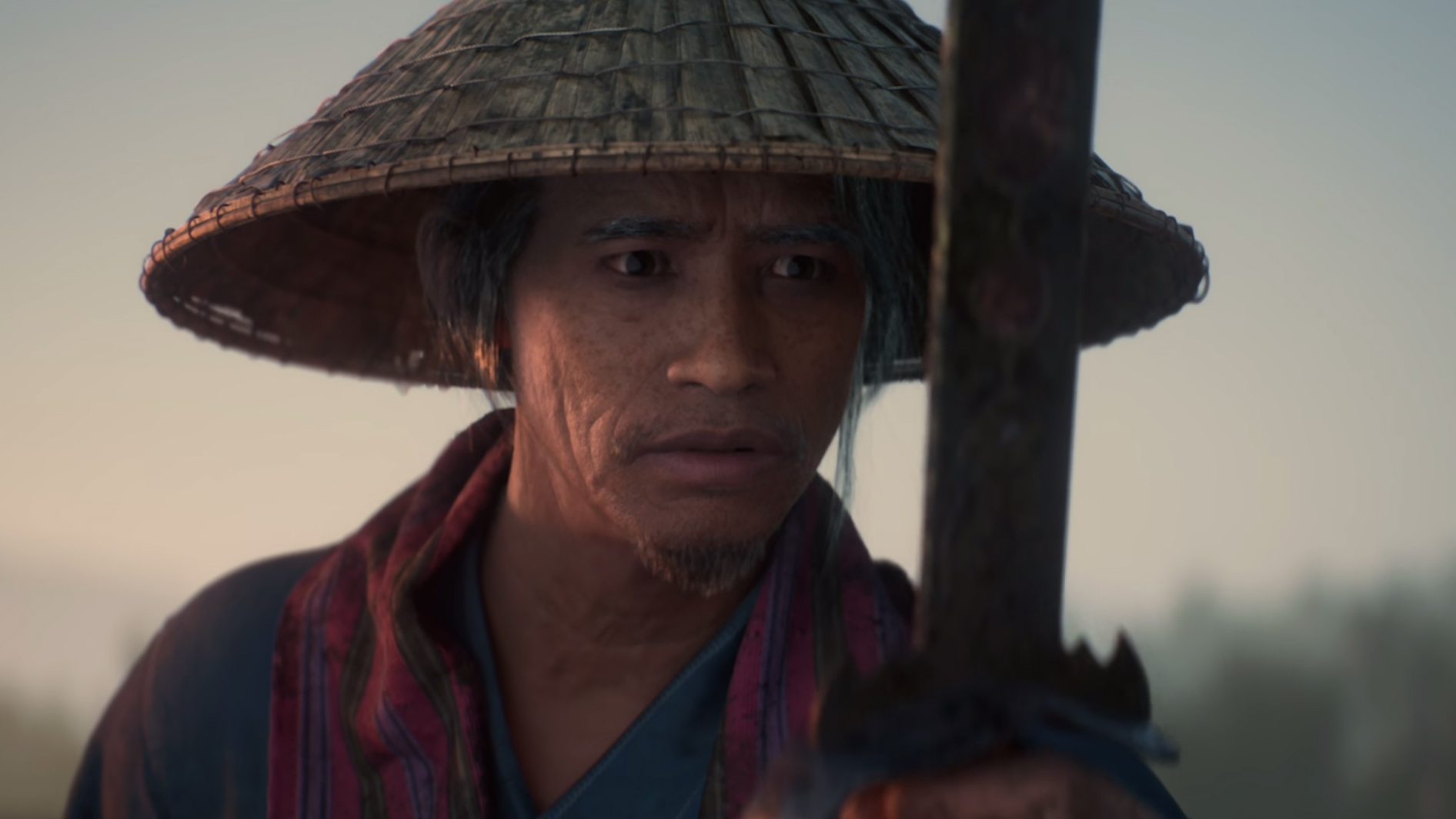
© Firaxis

© Colin Anderson via Getty Images
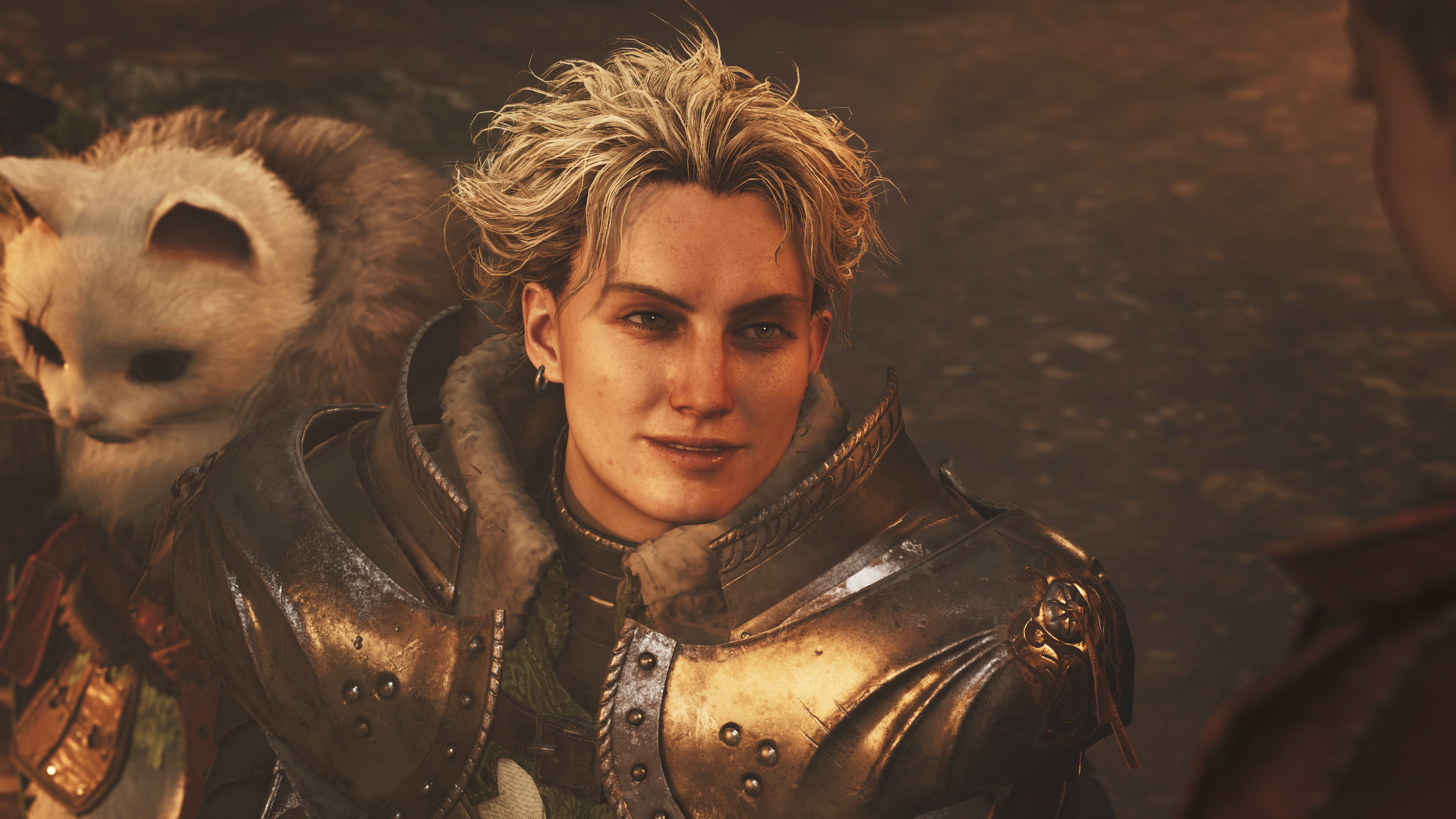
© Capcom